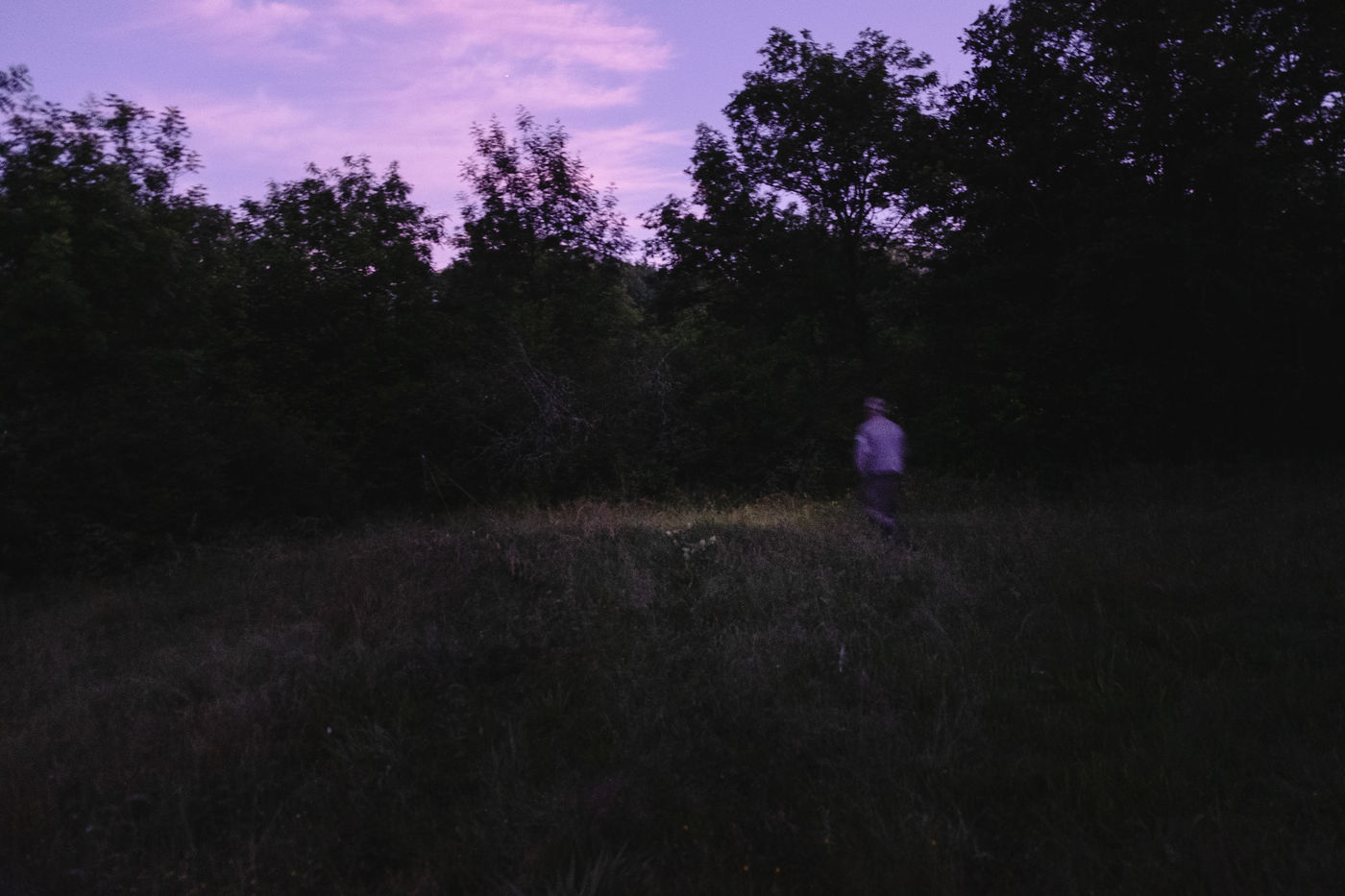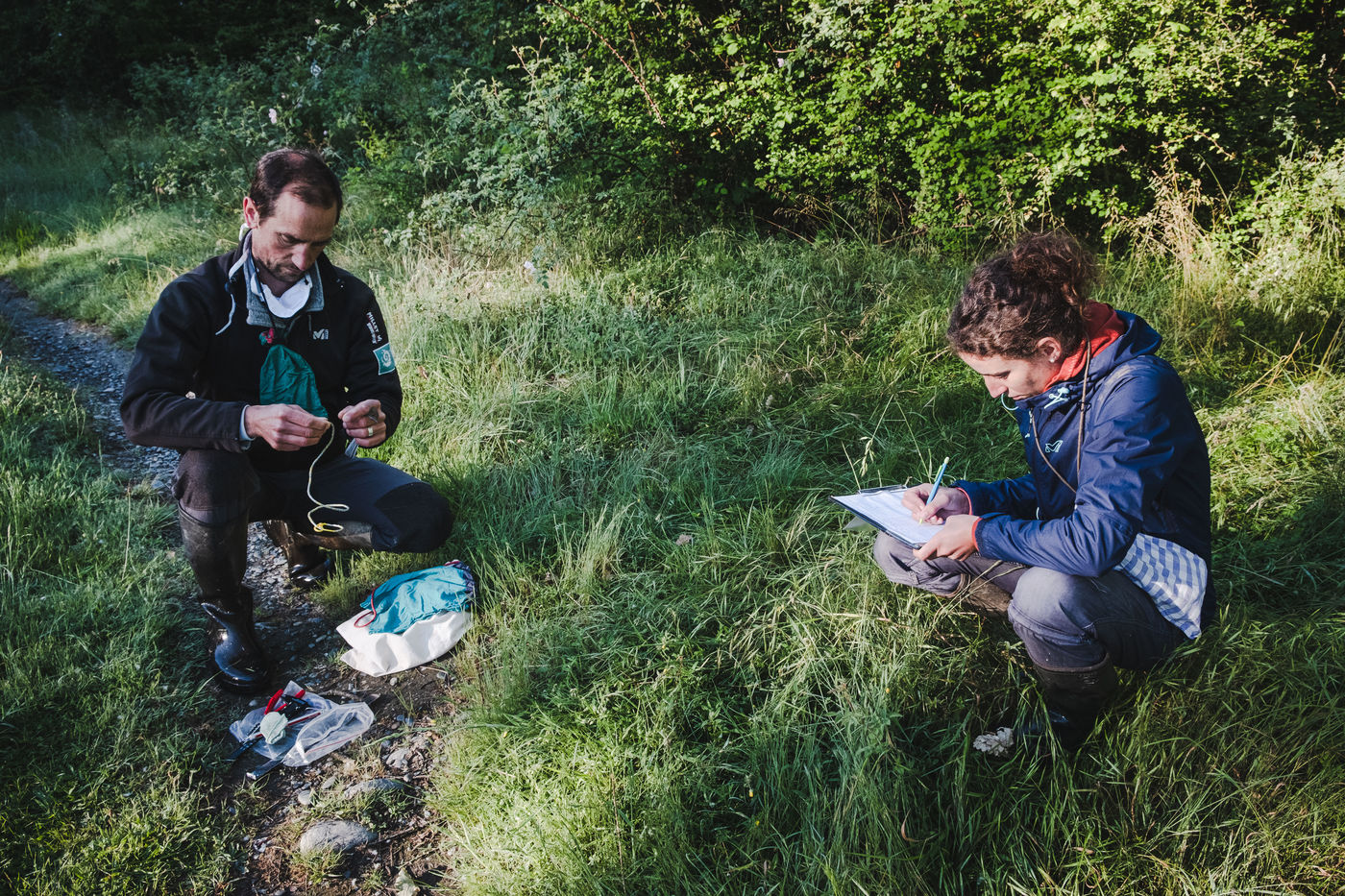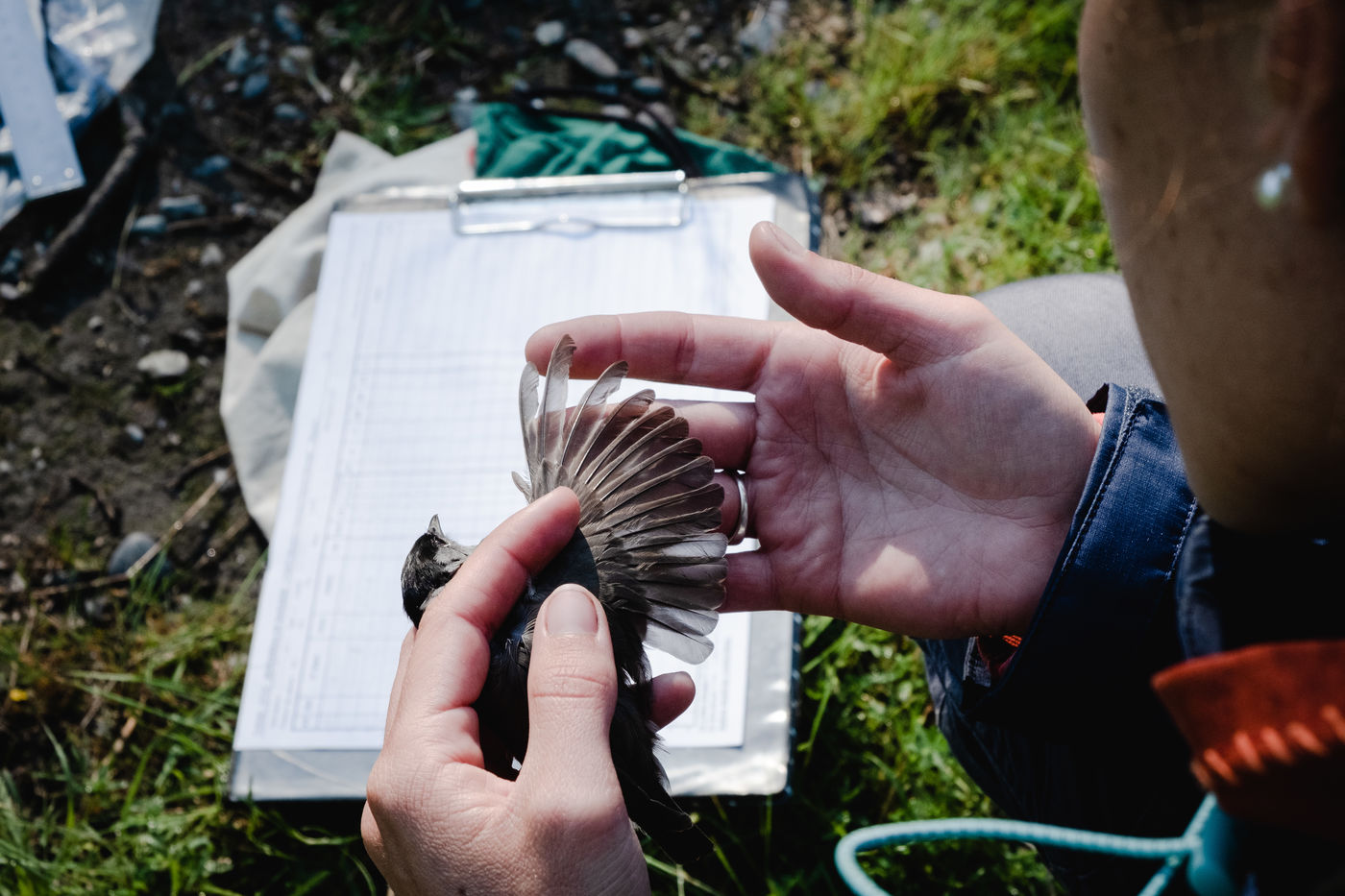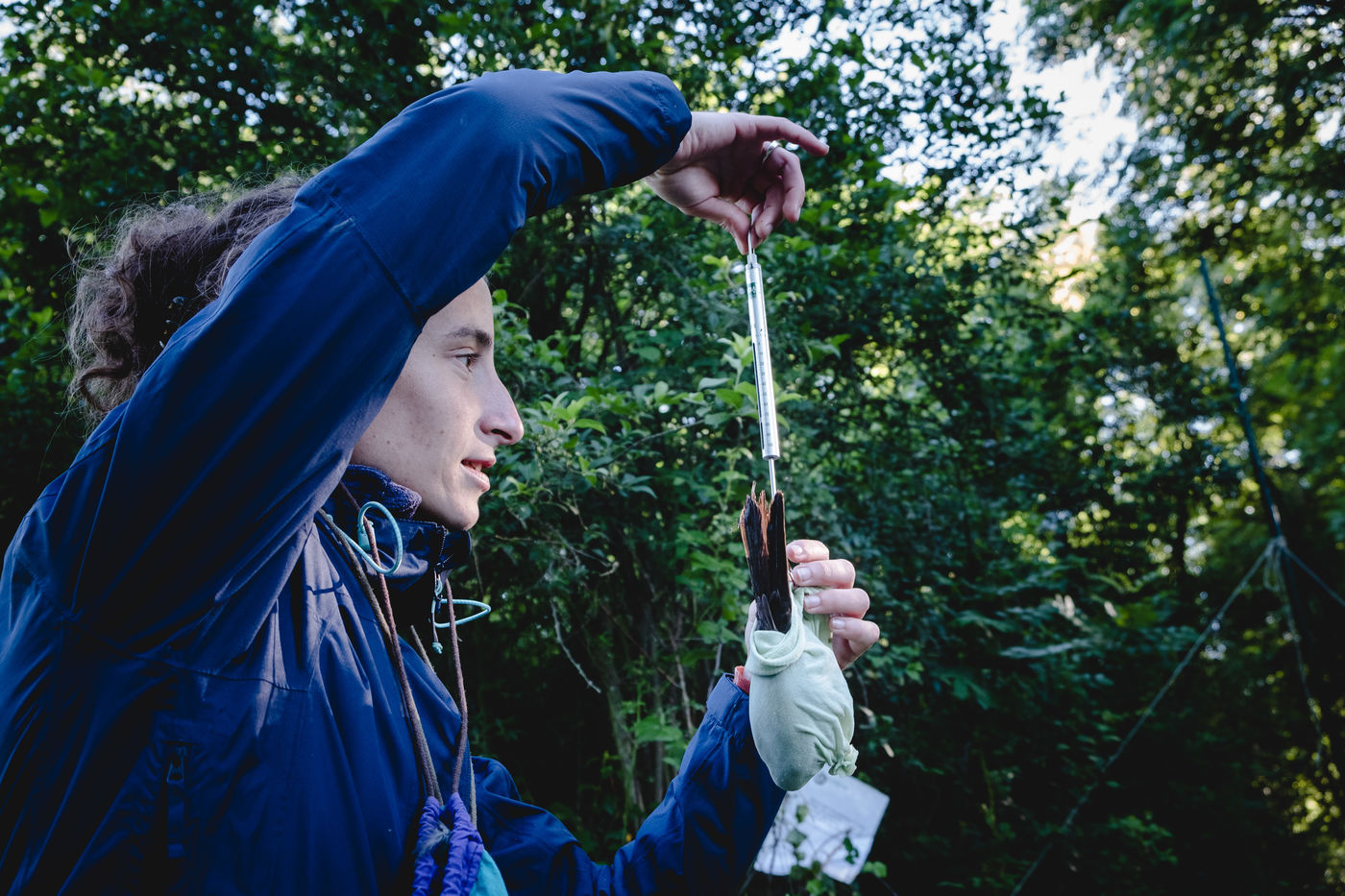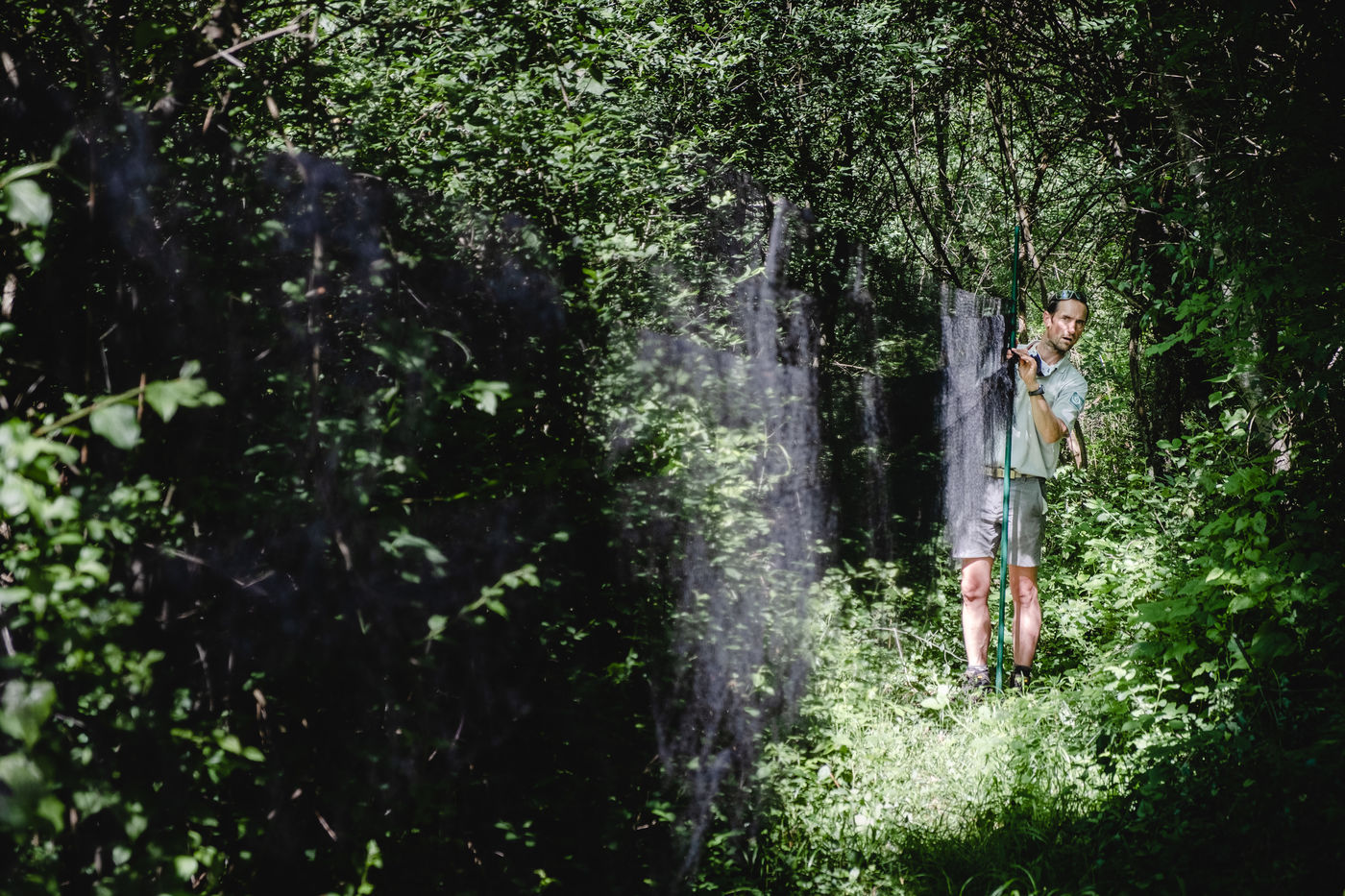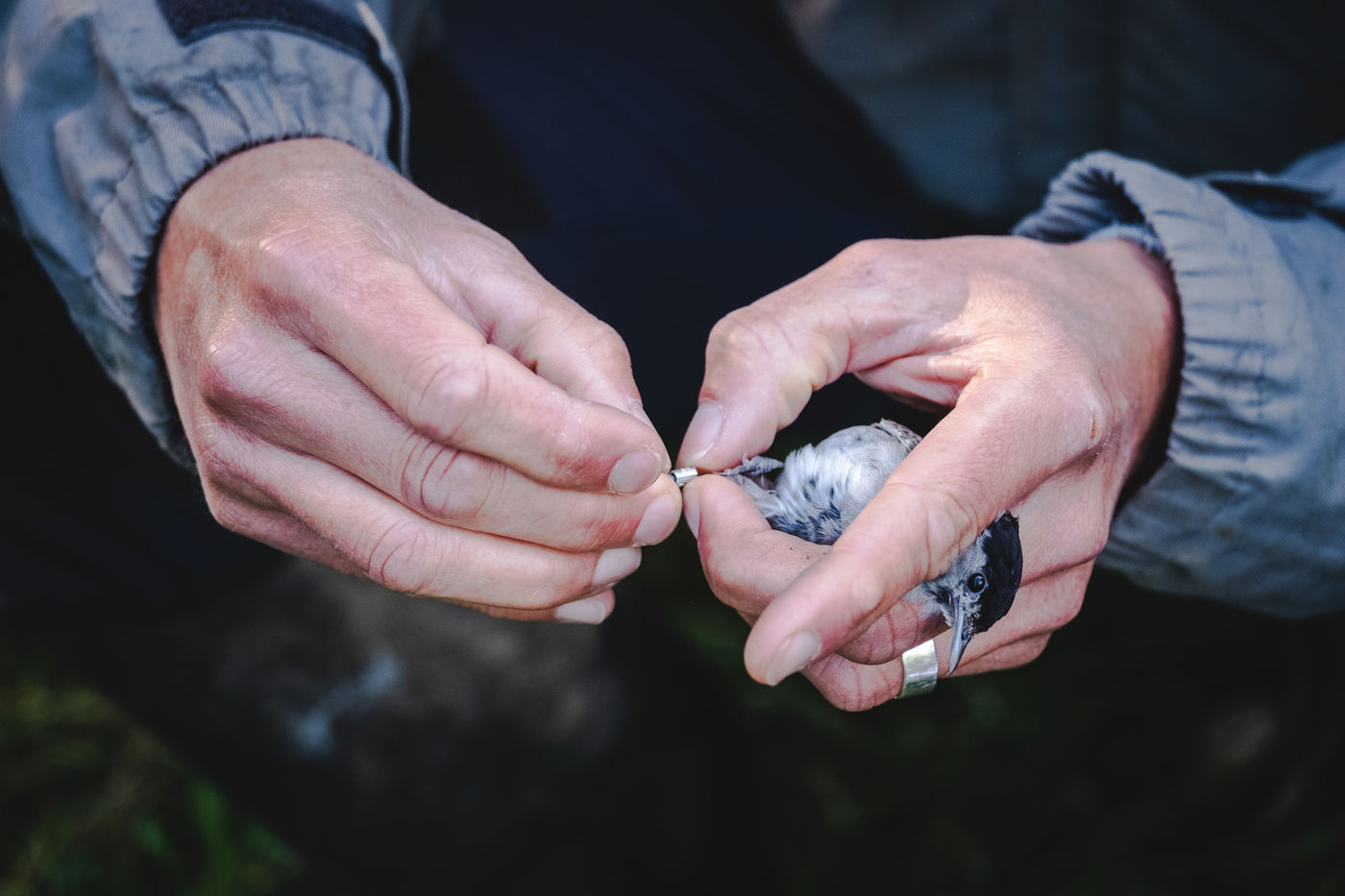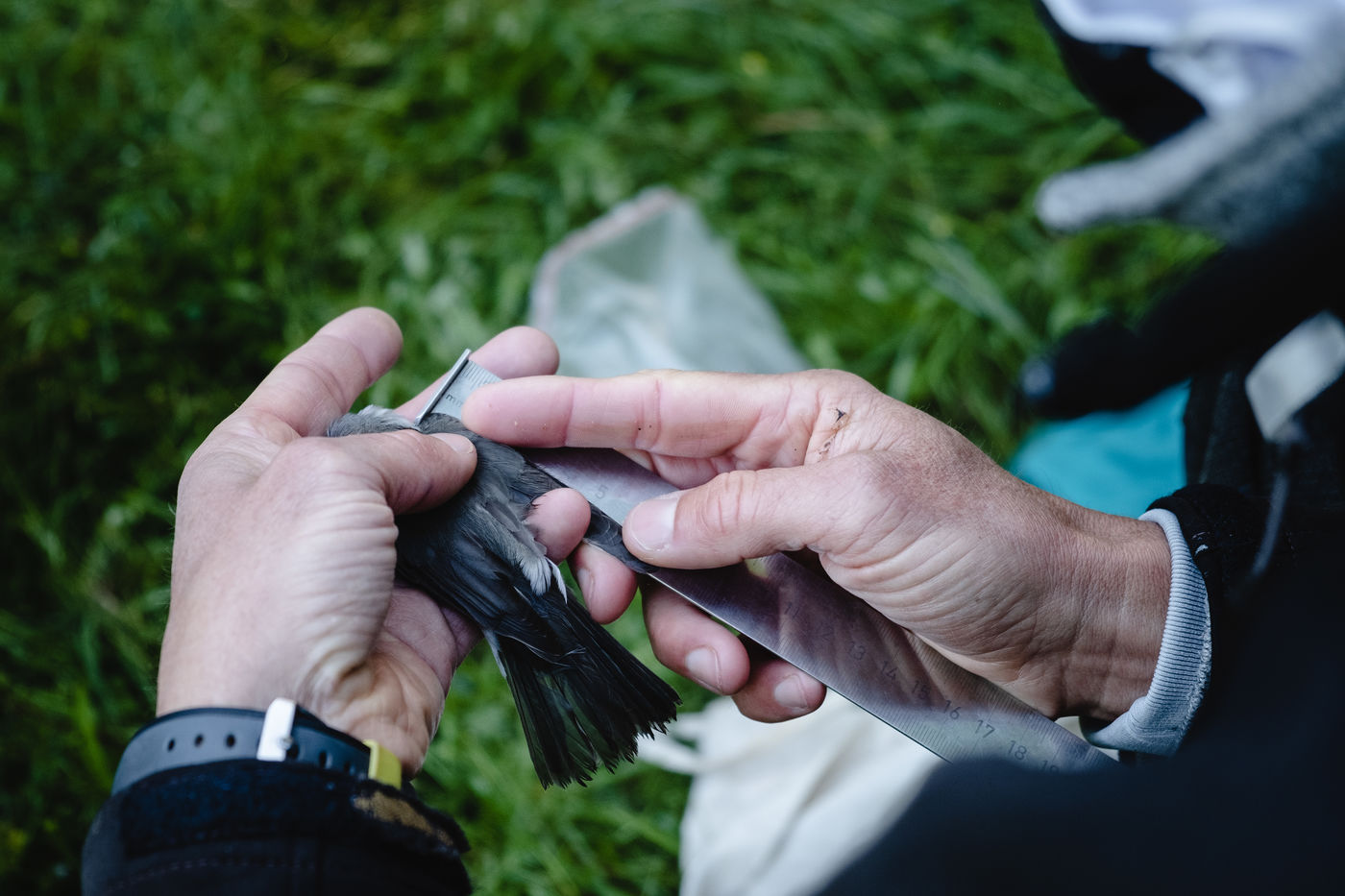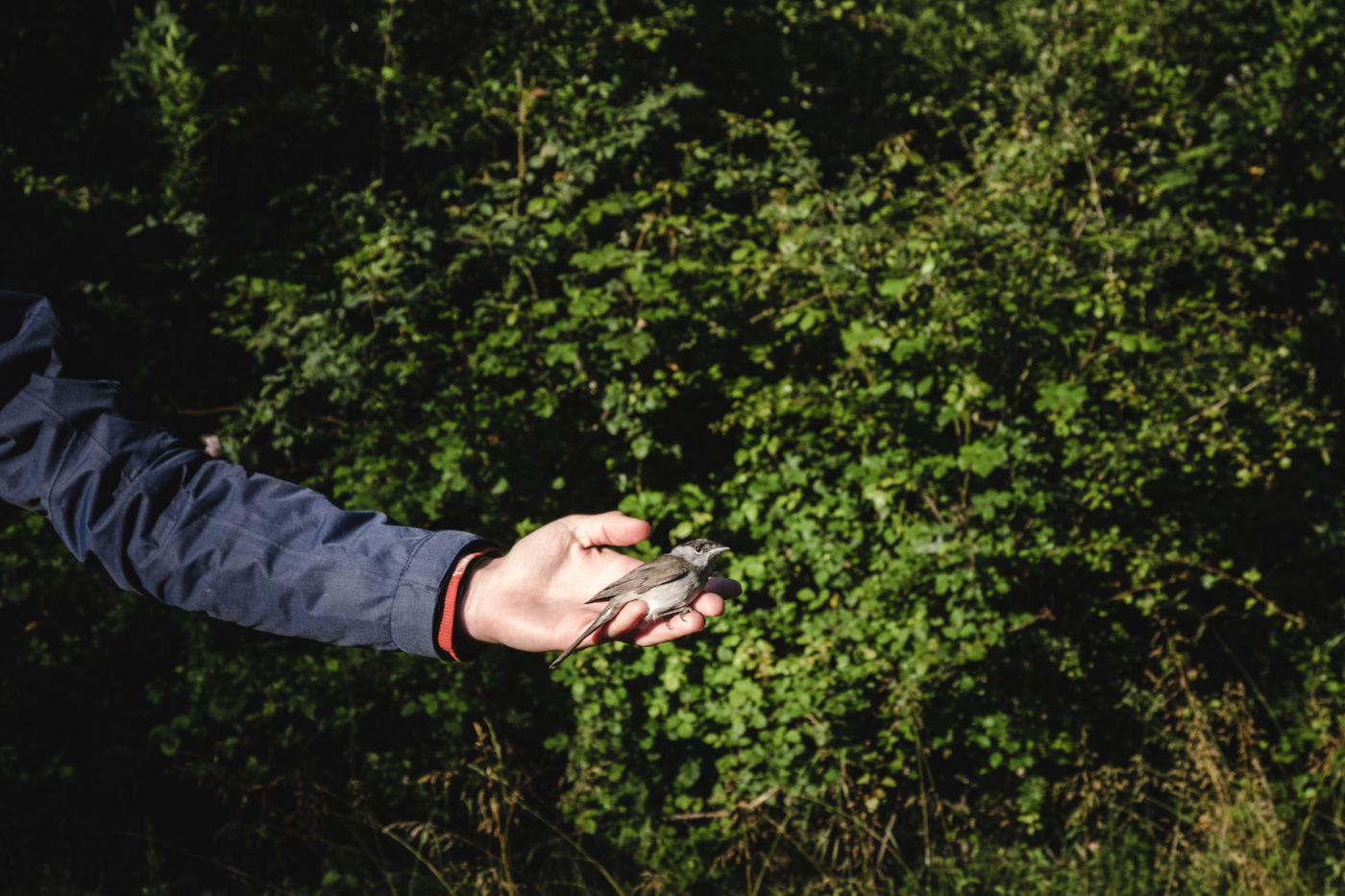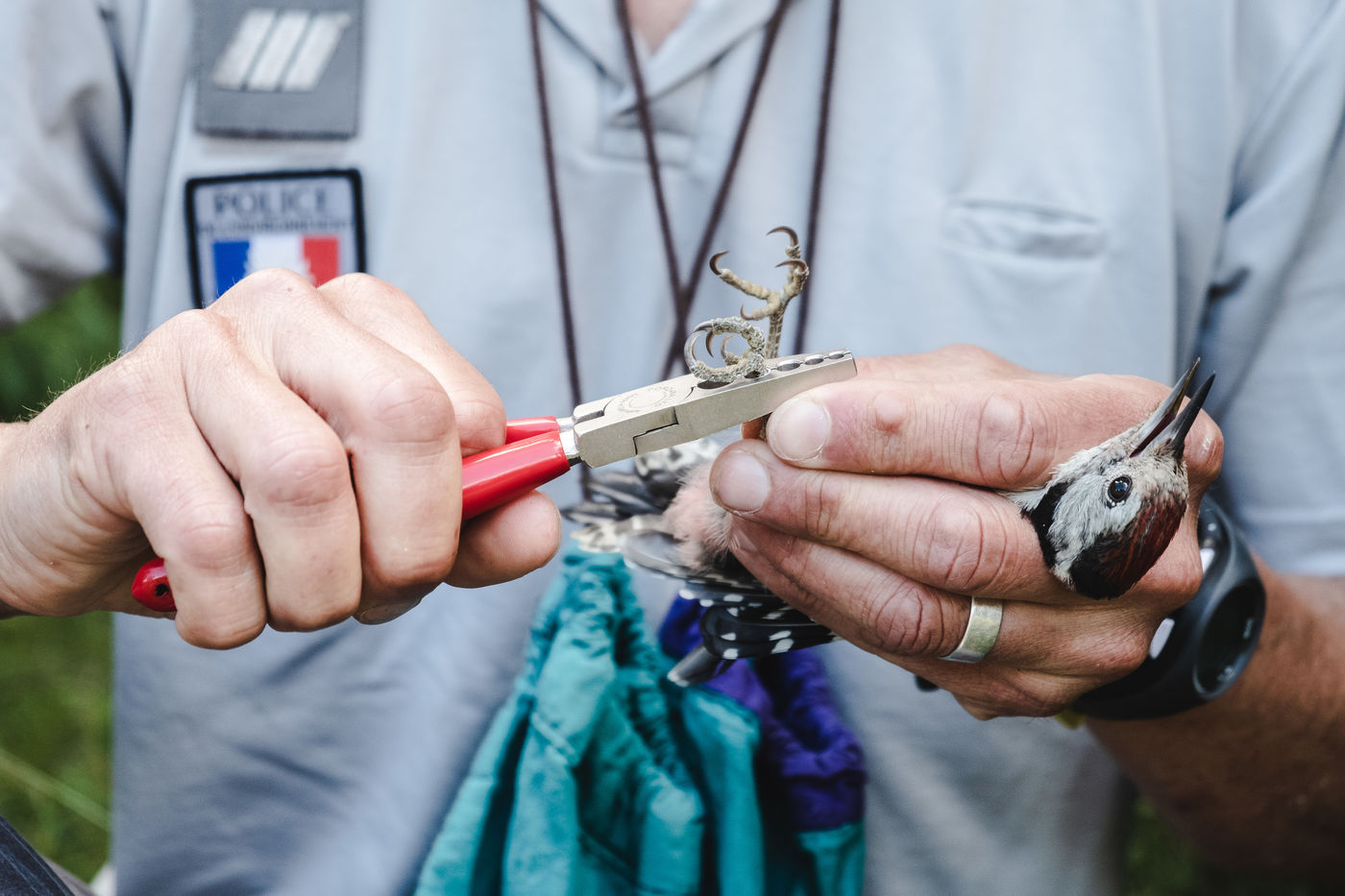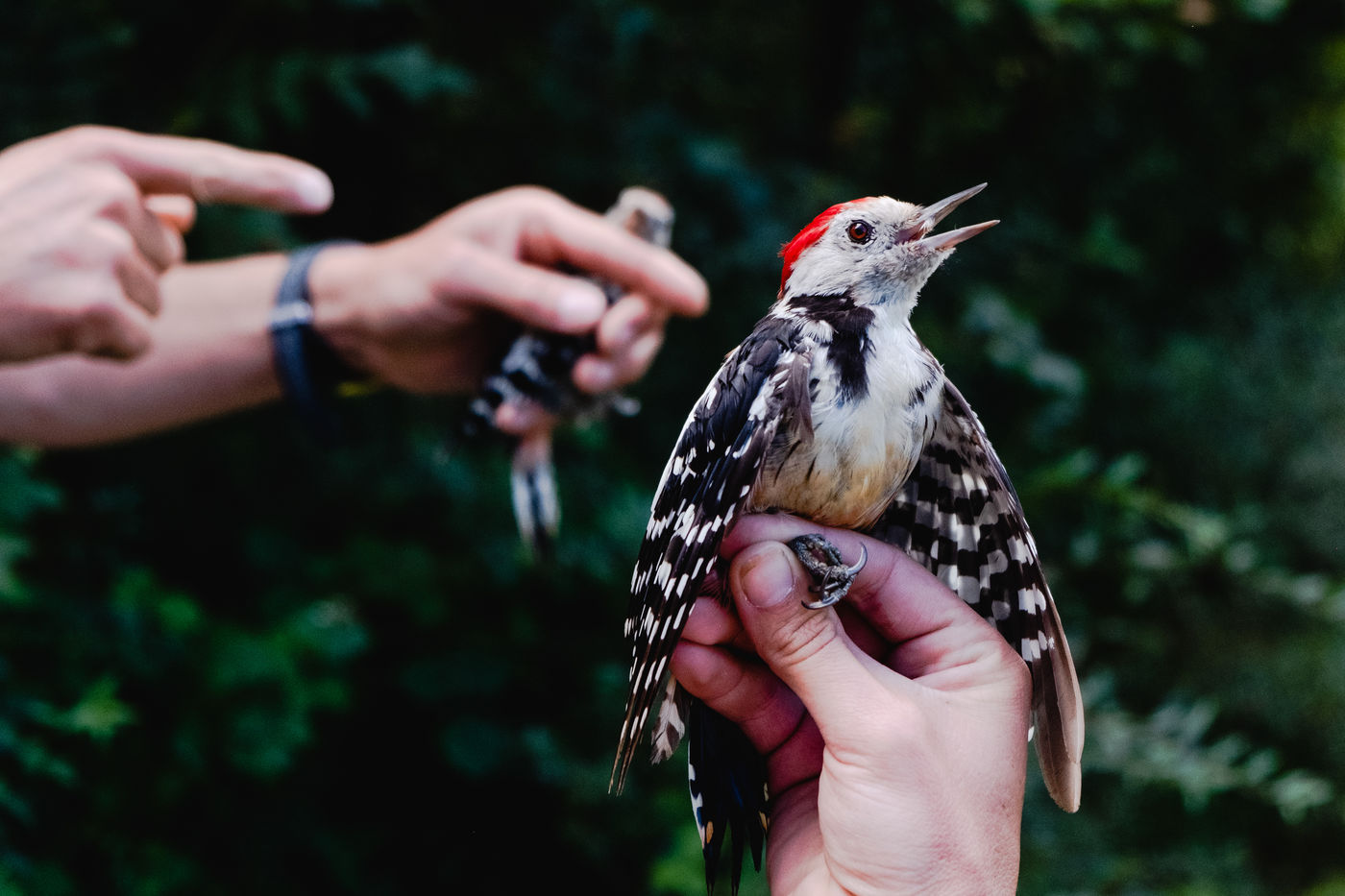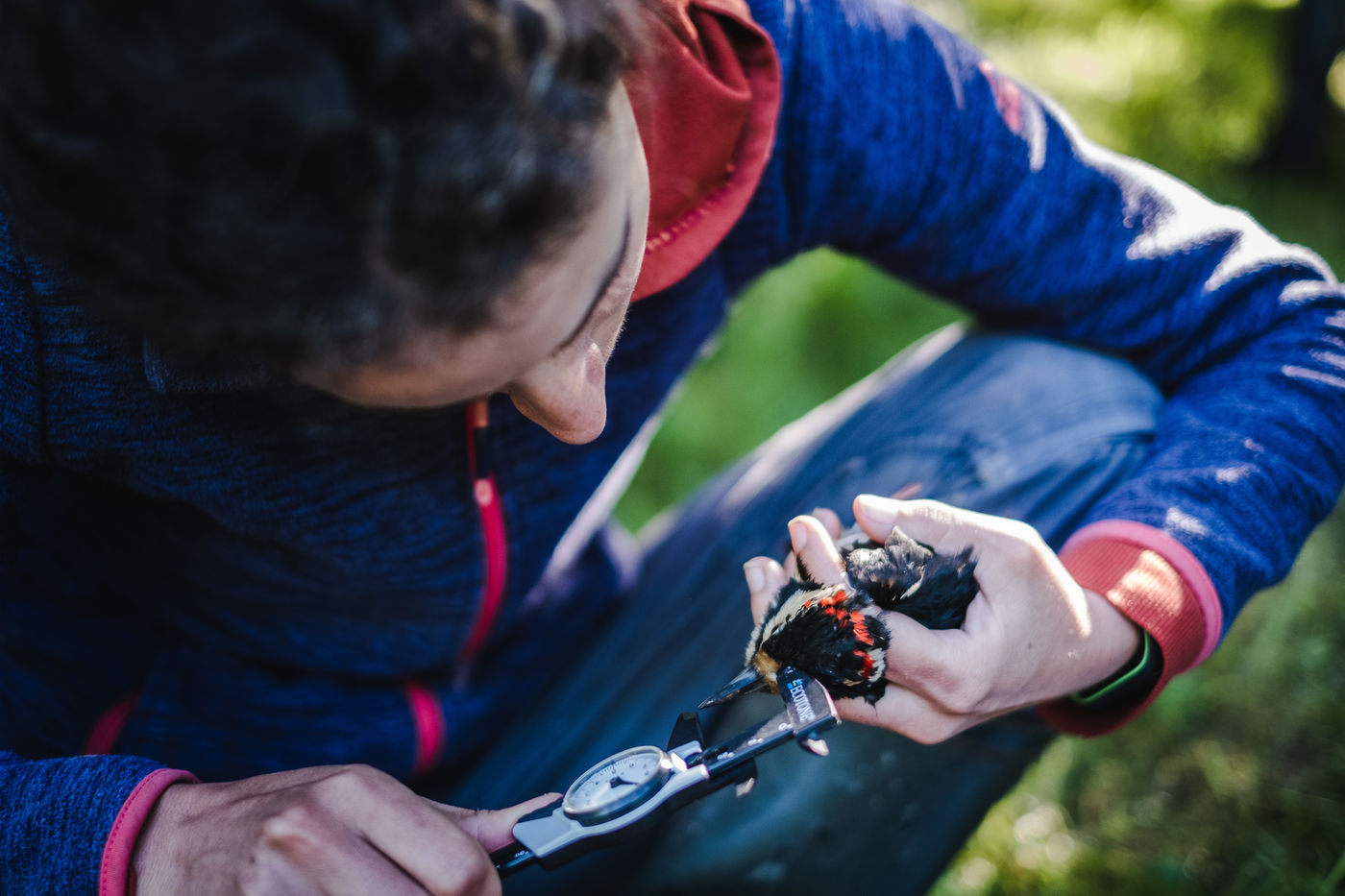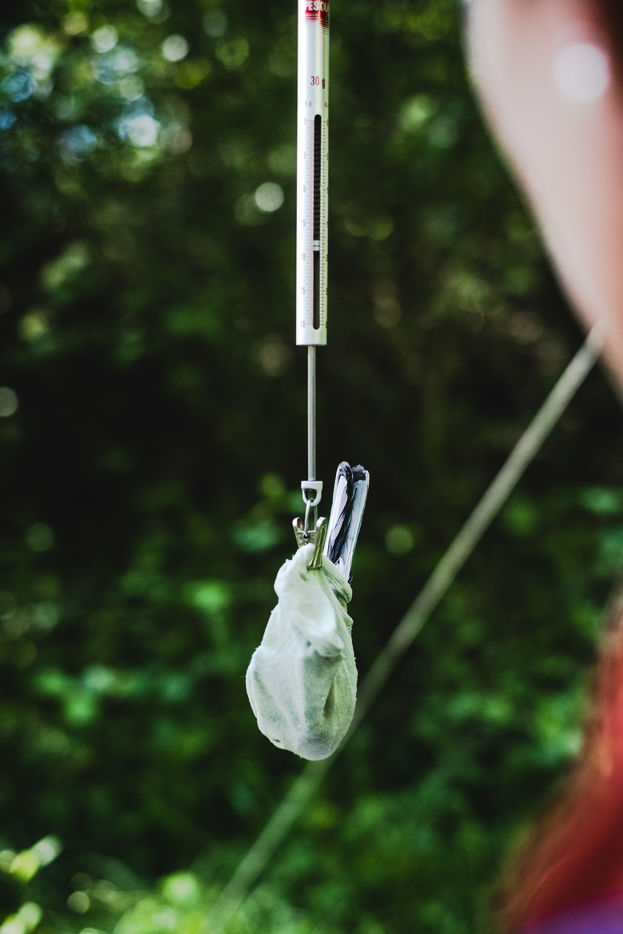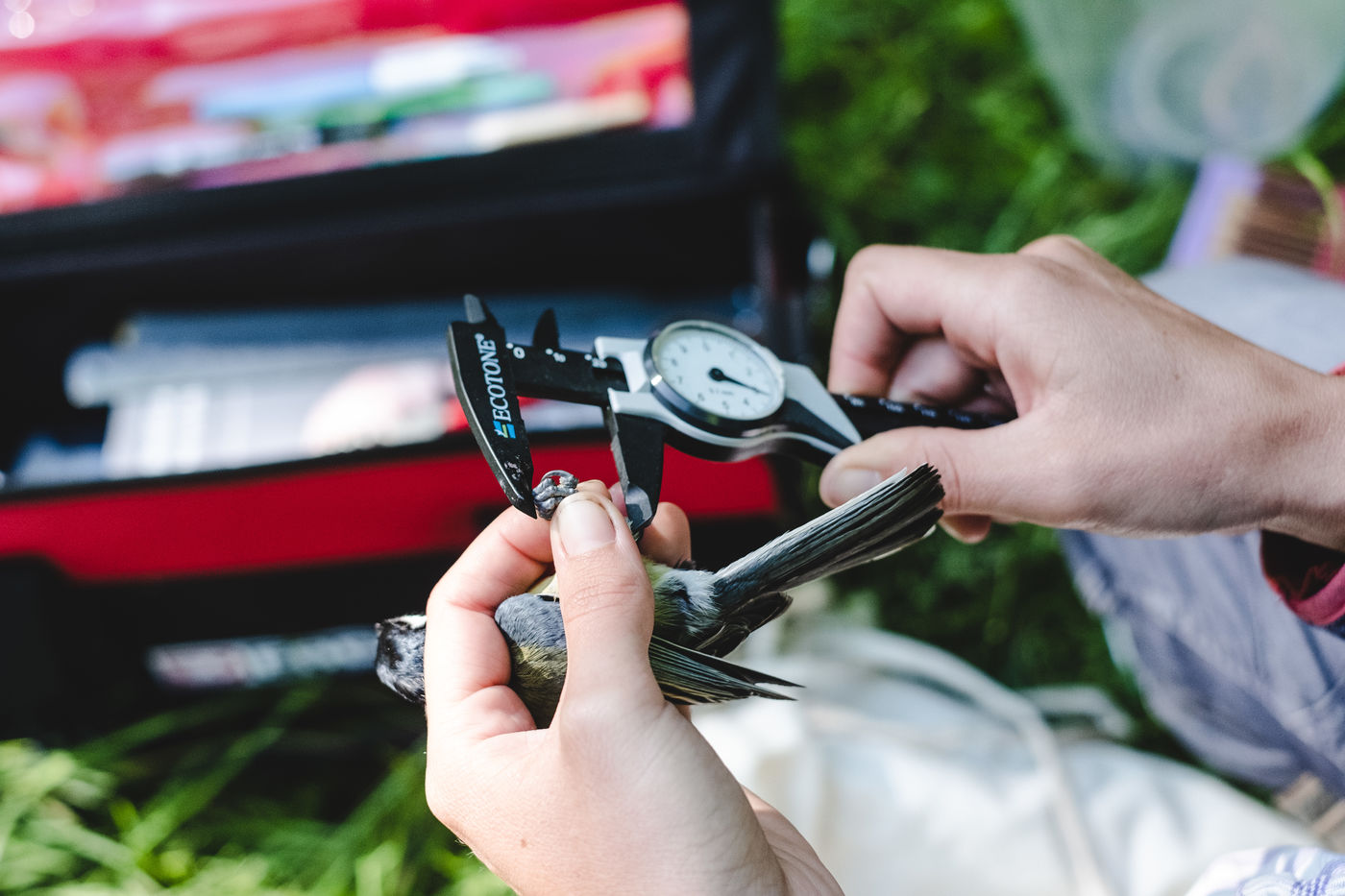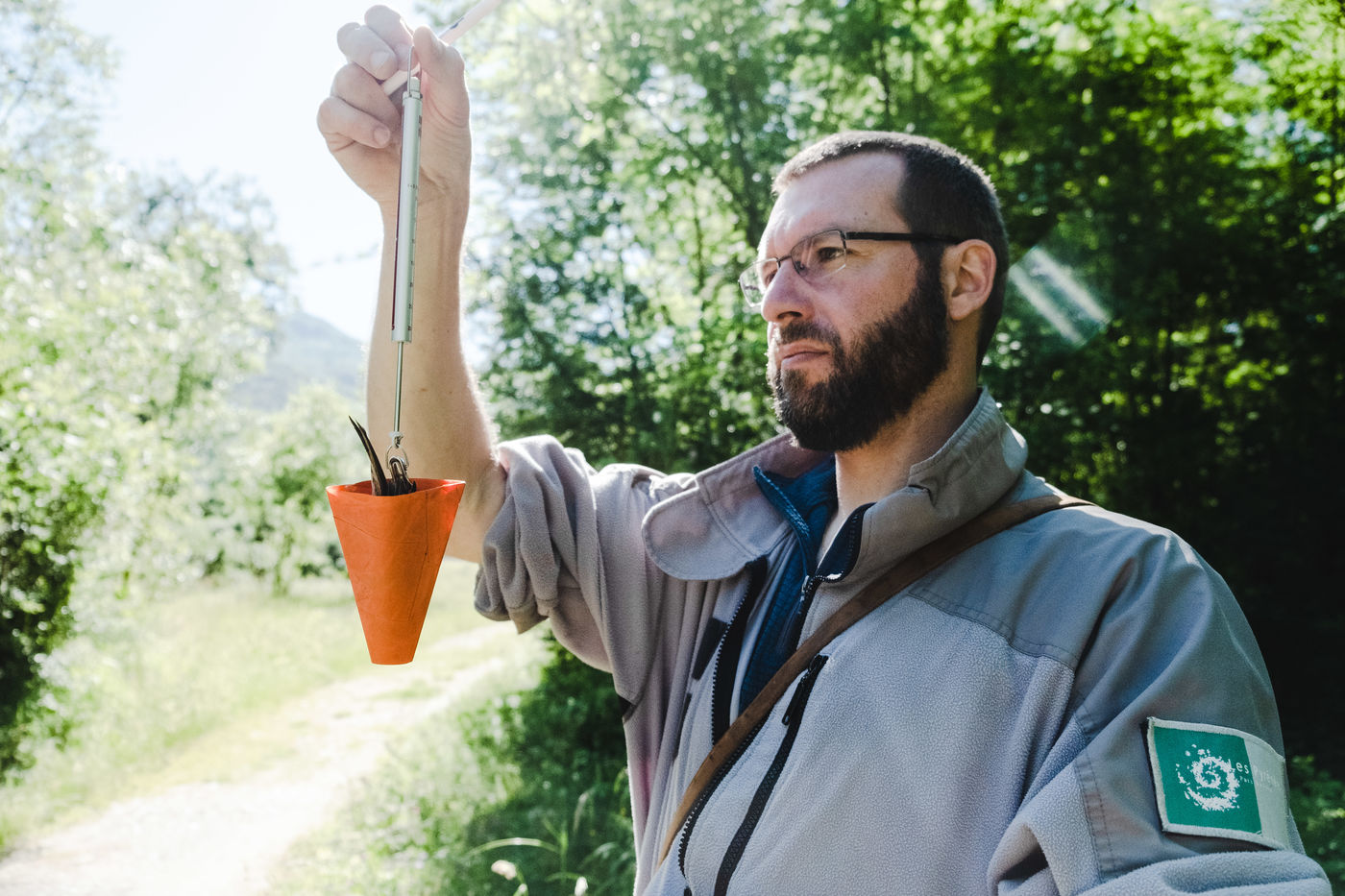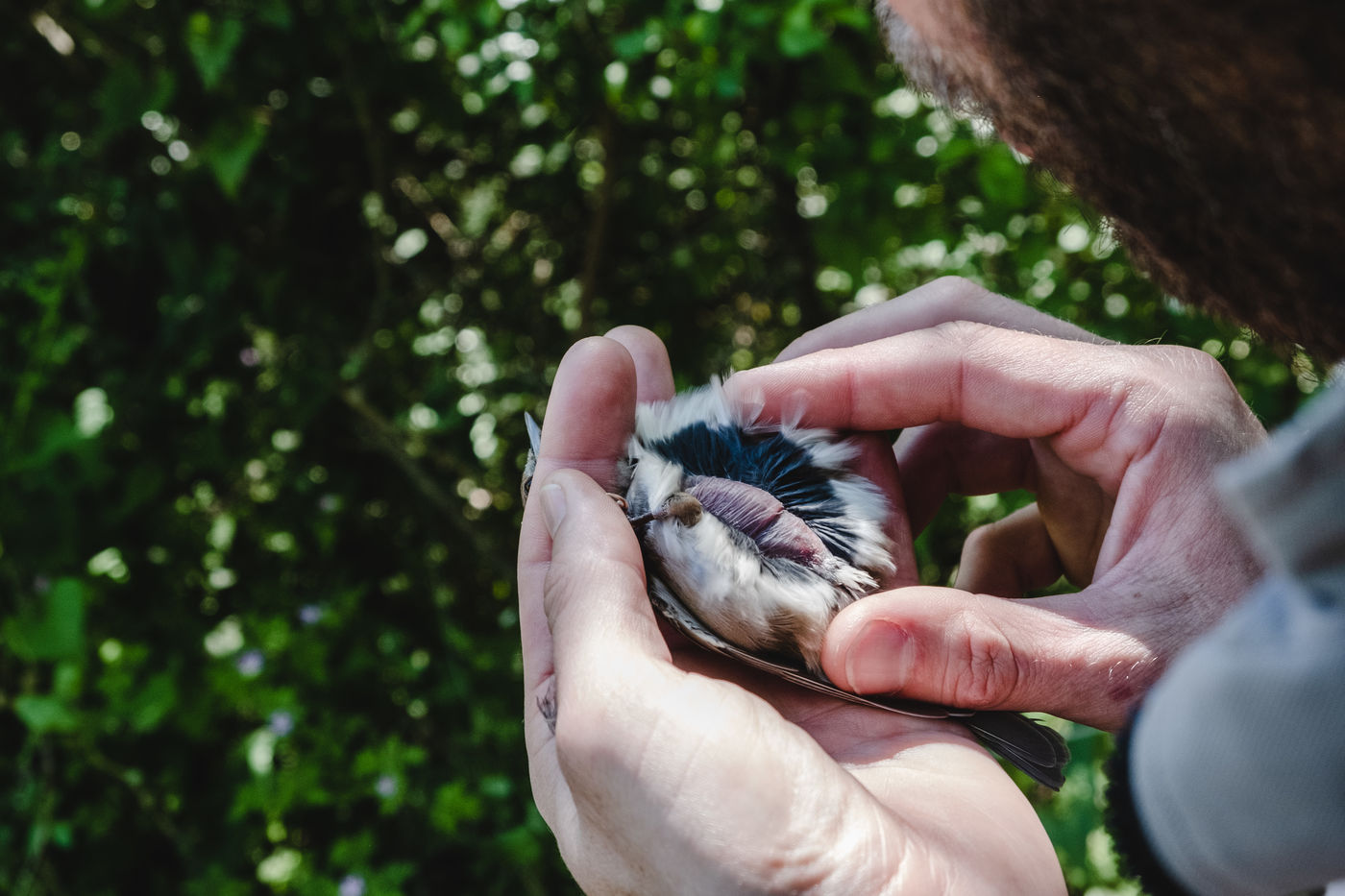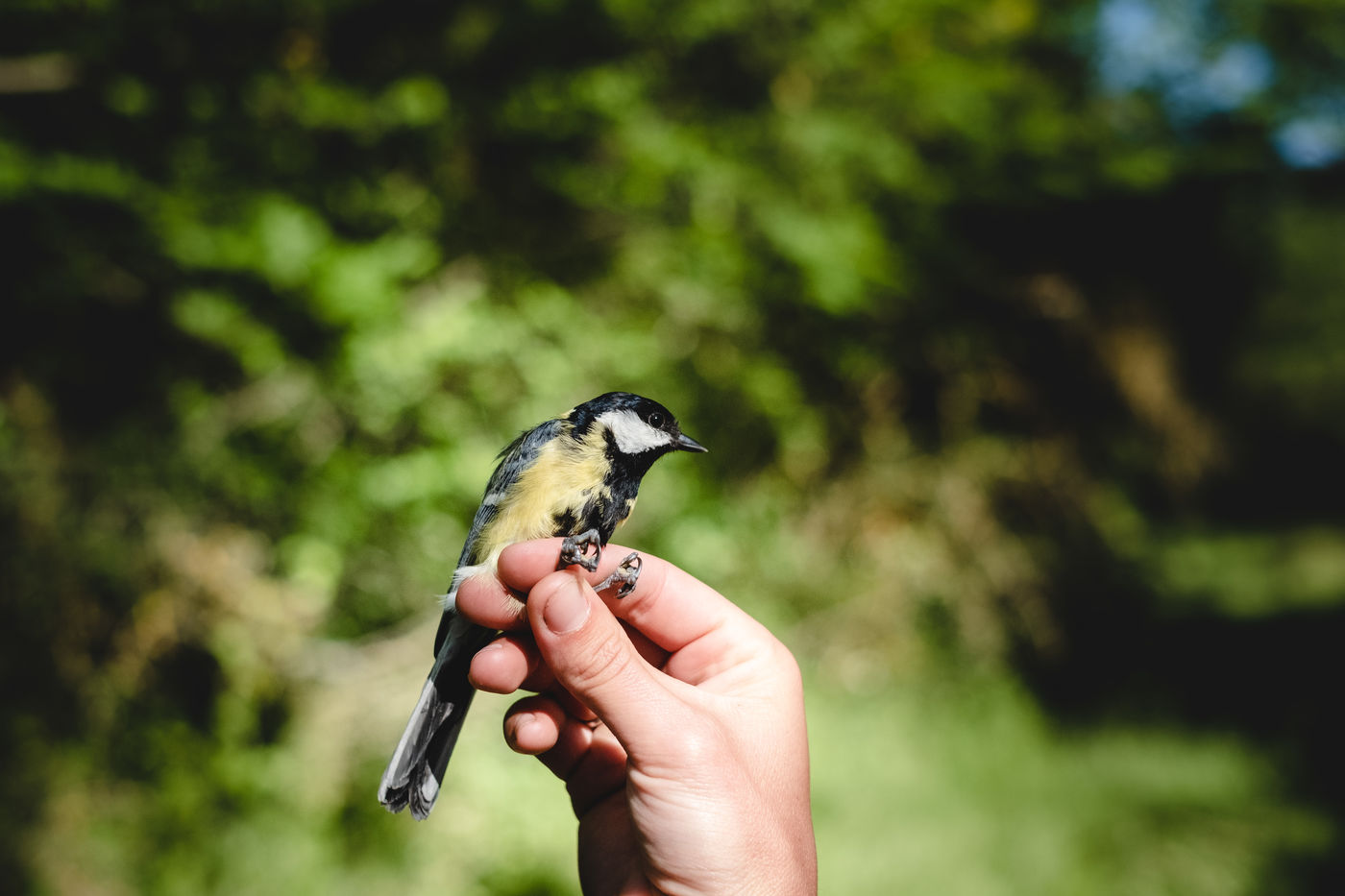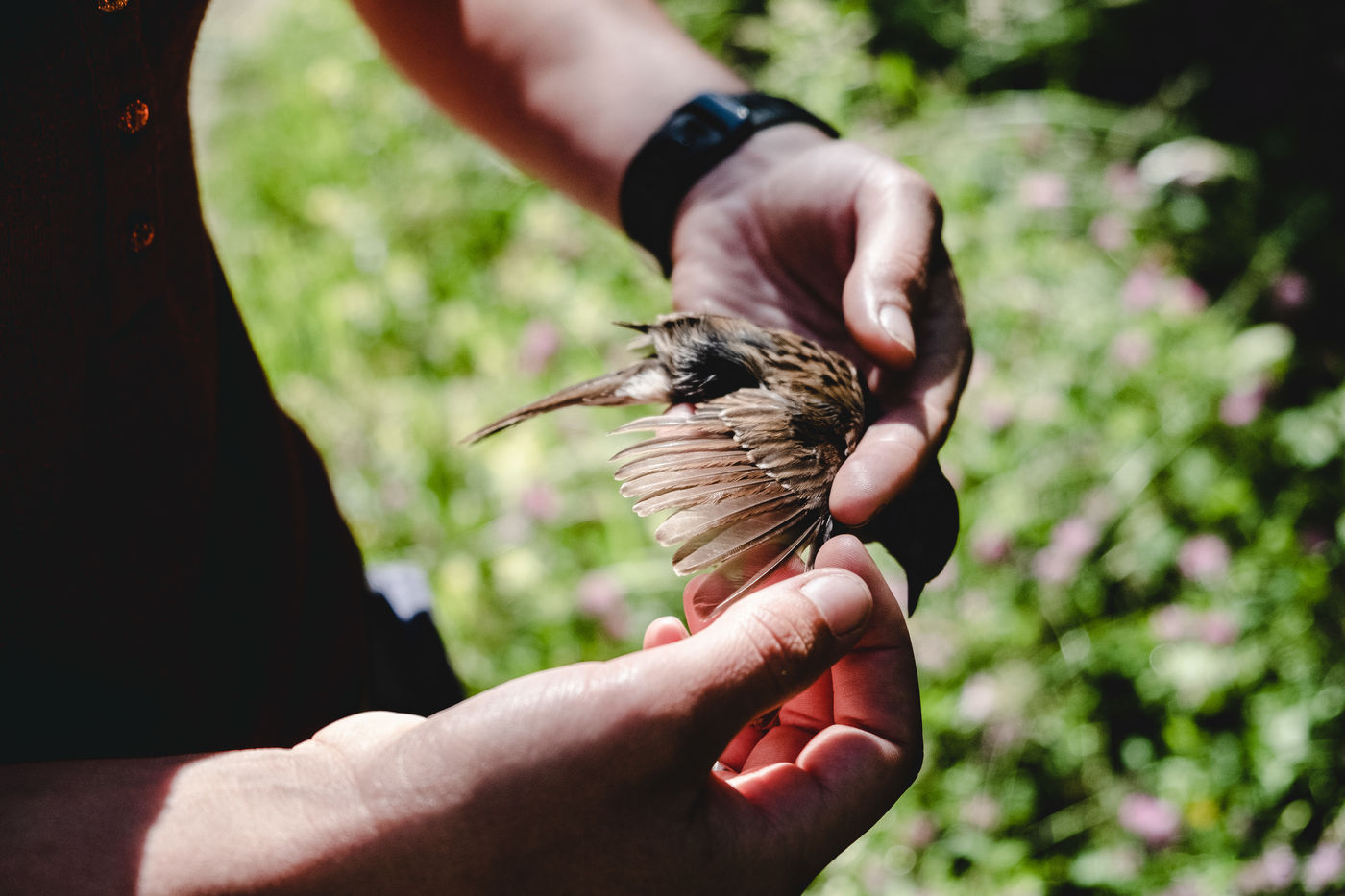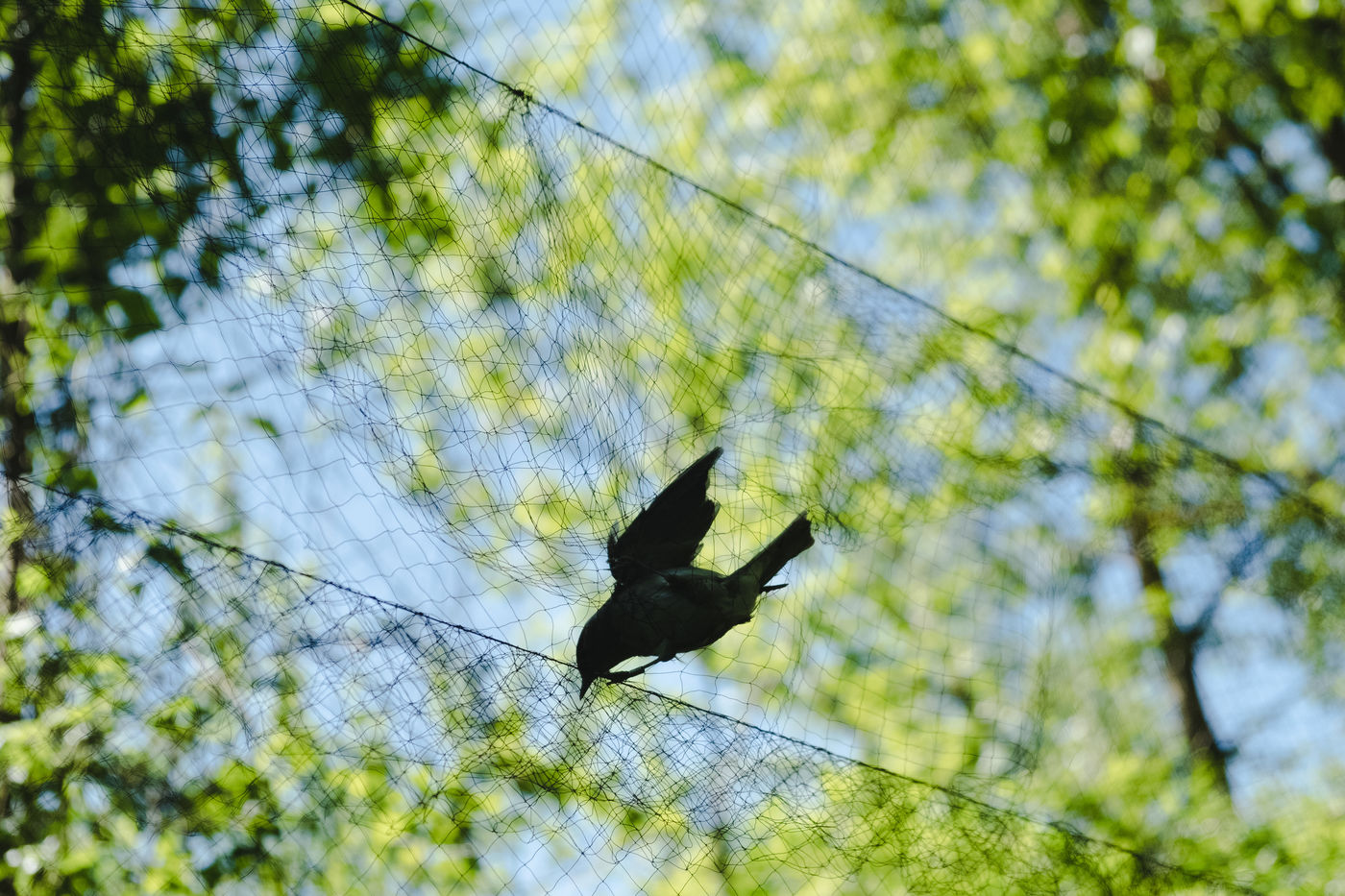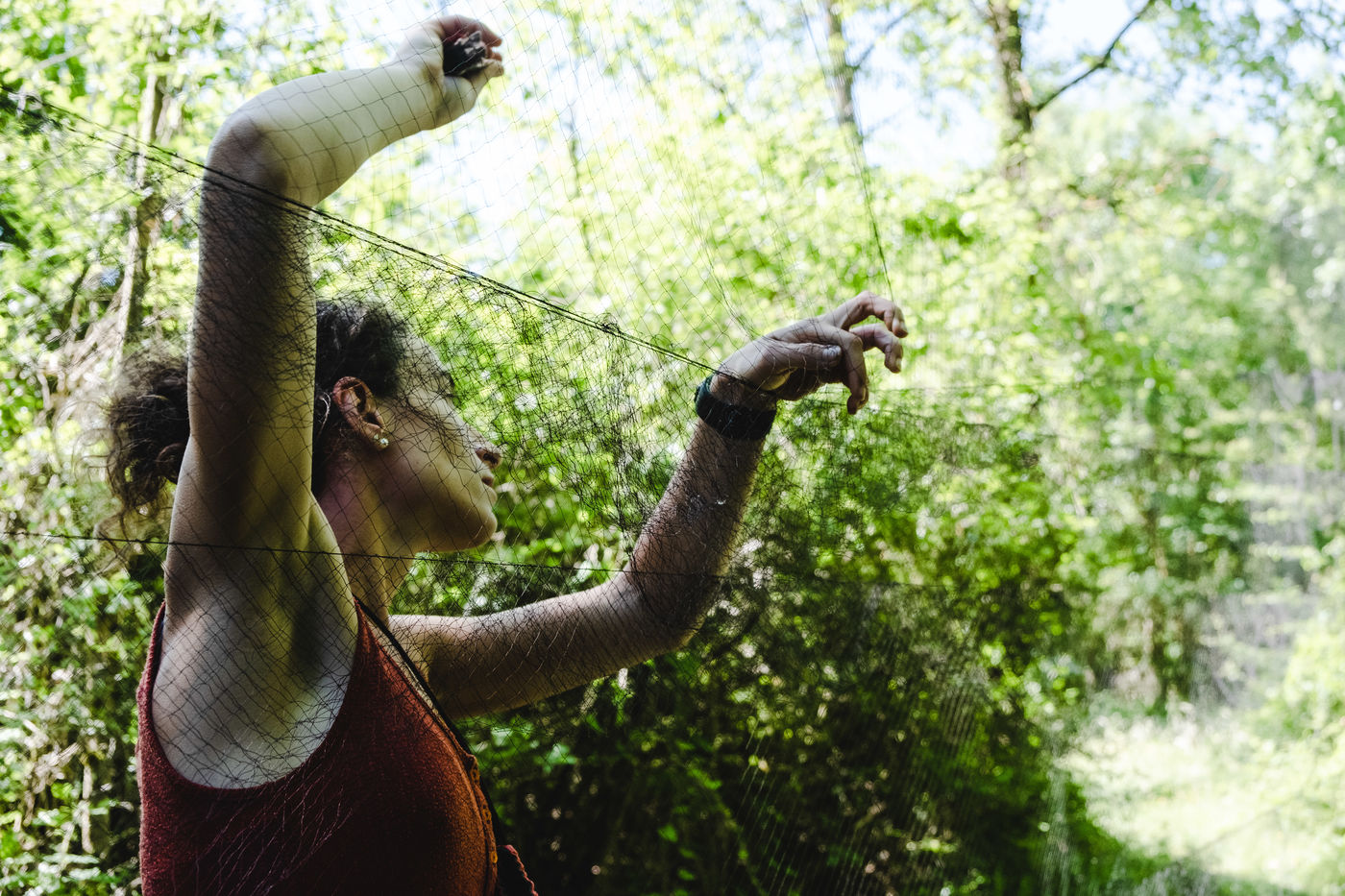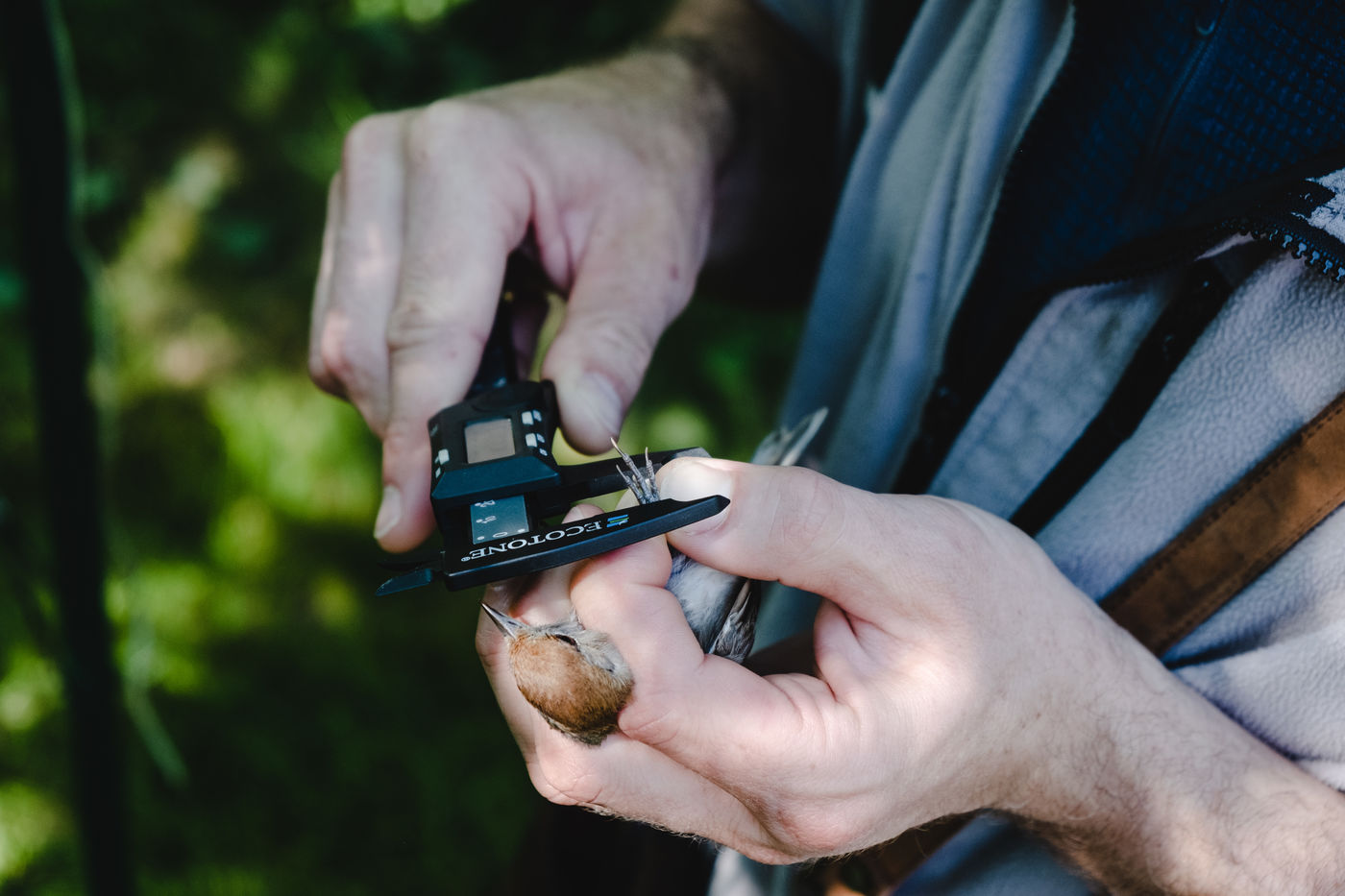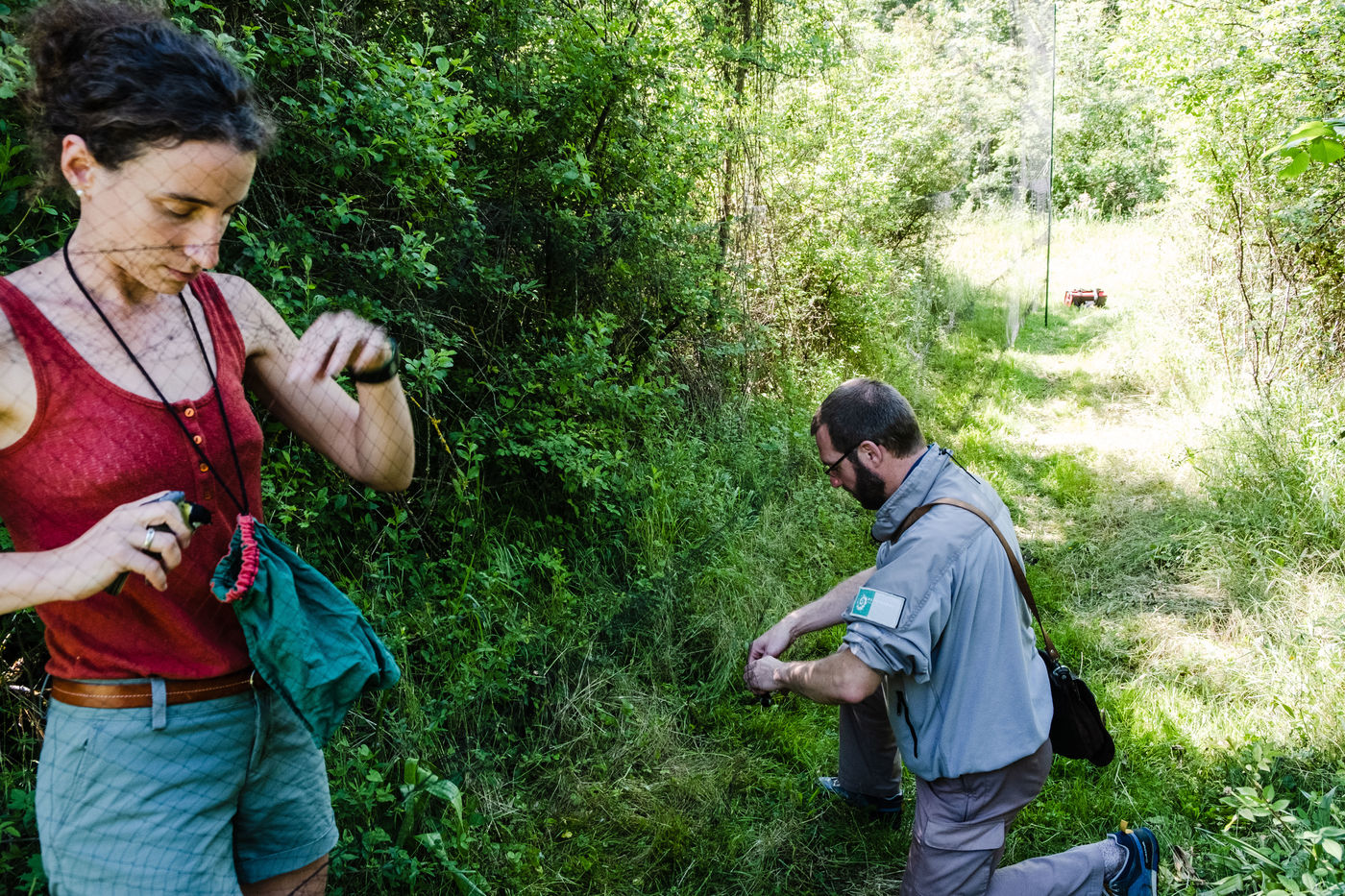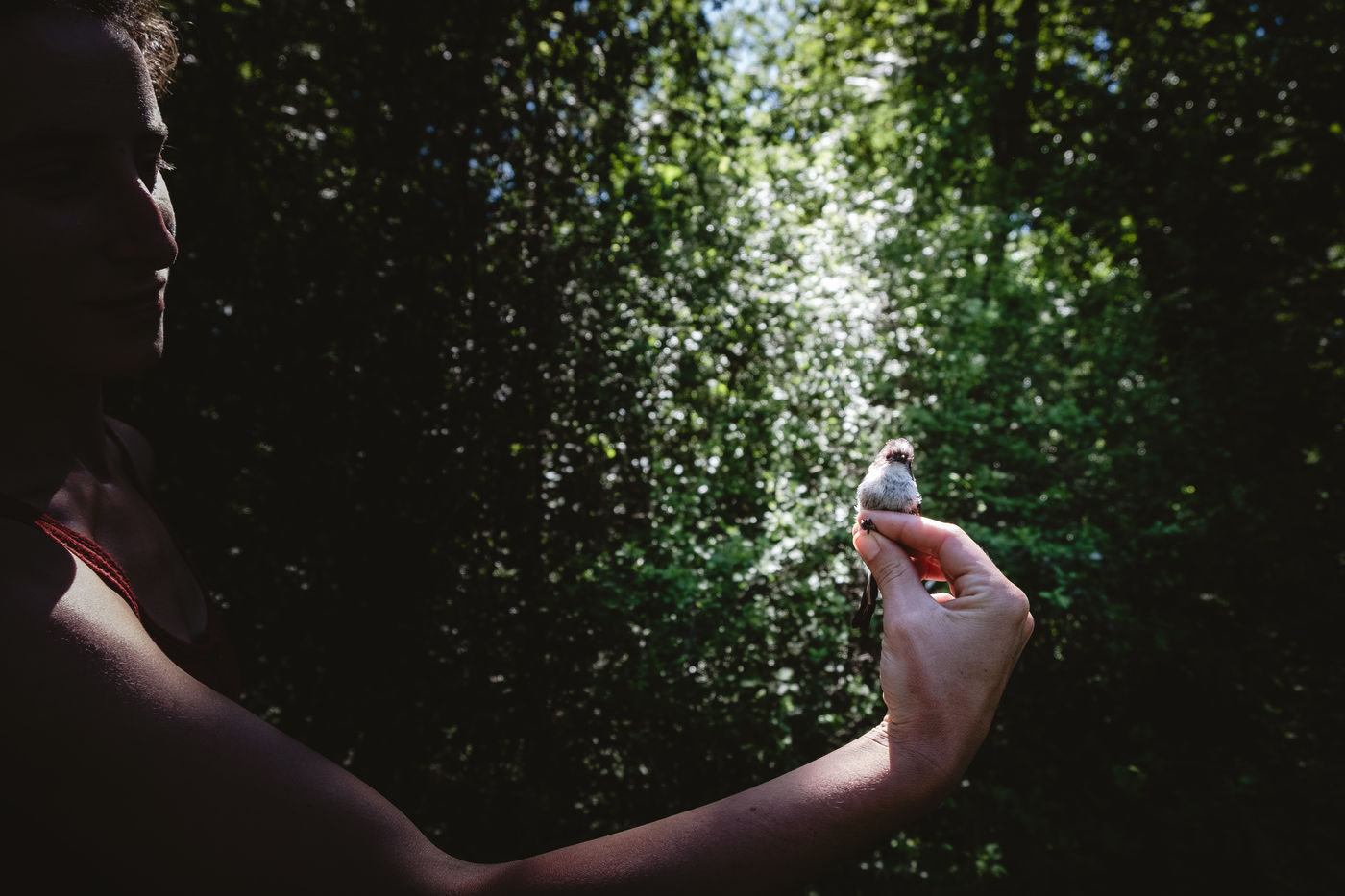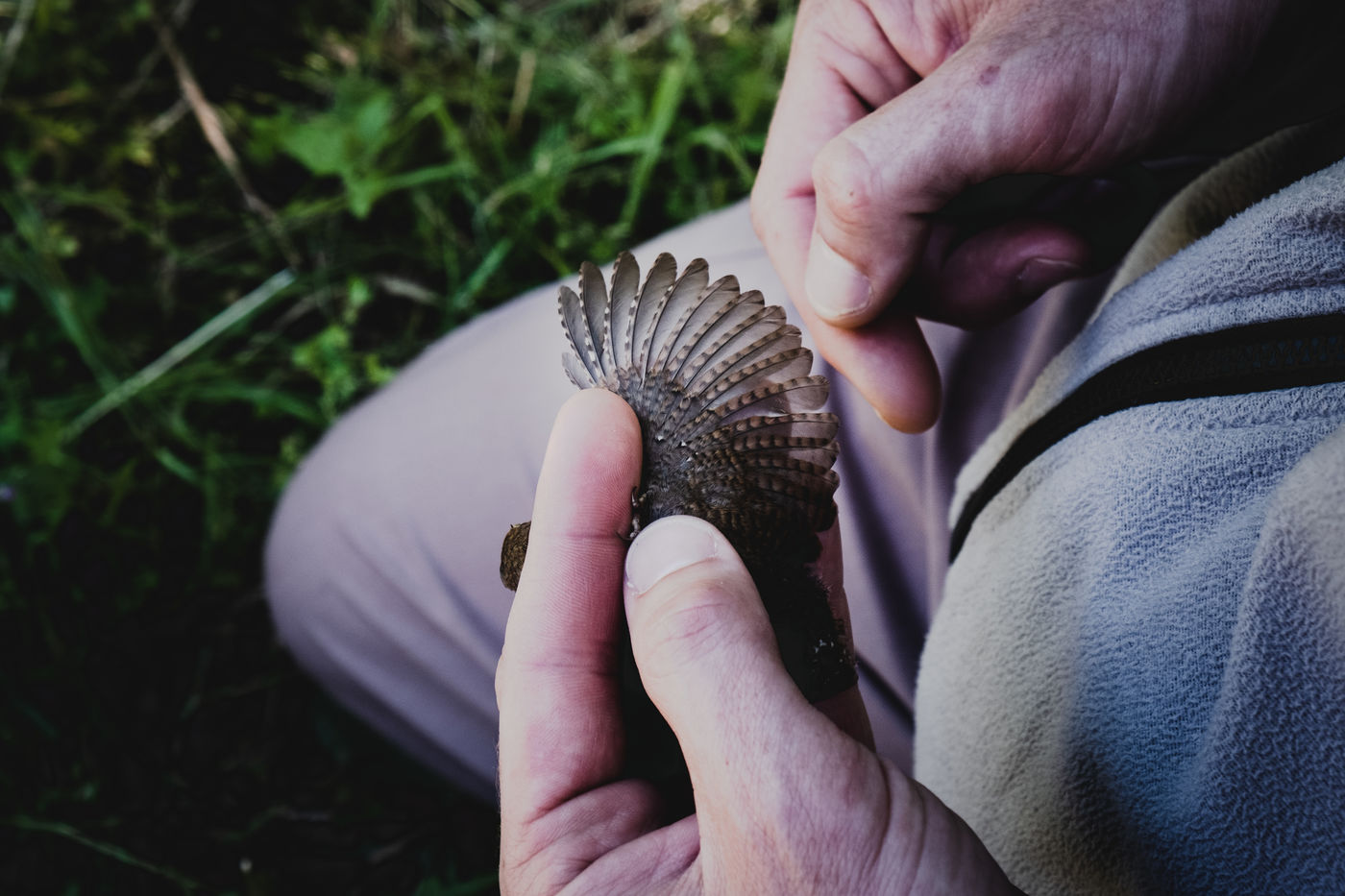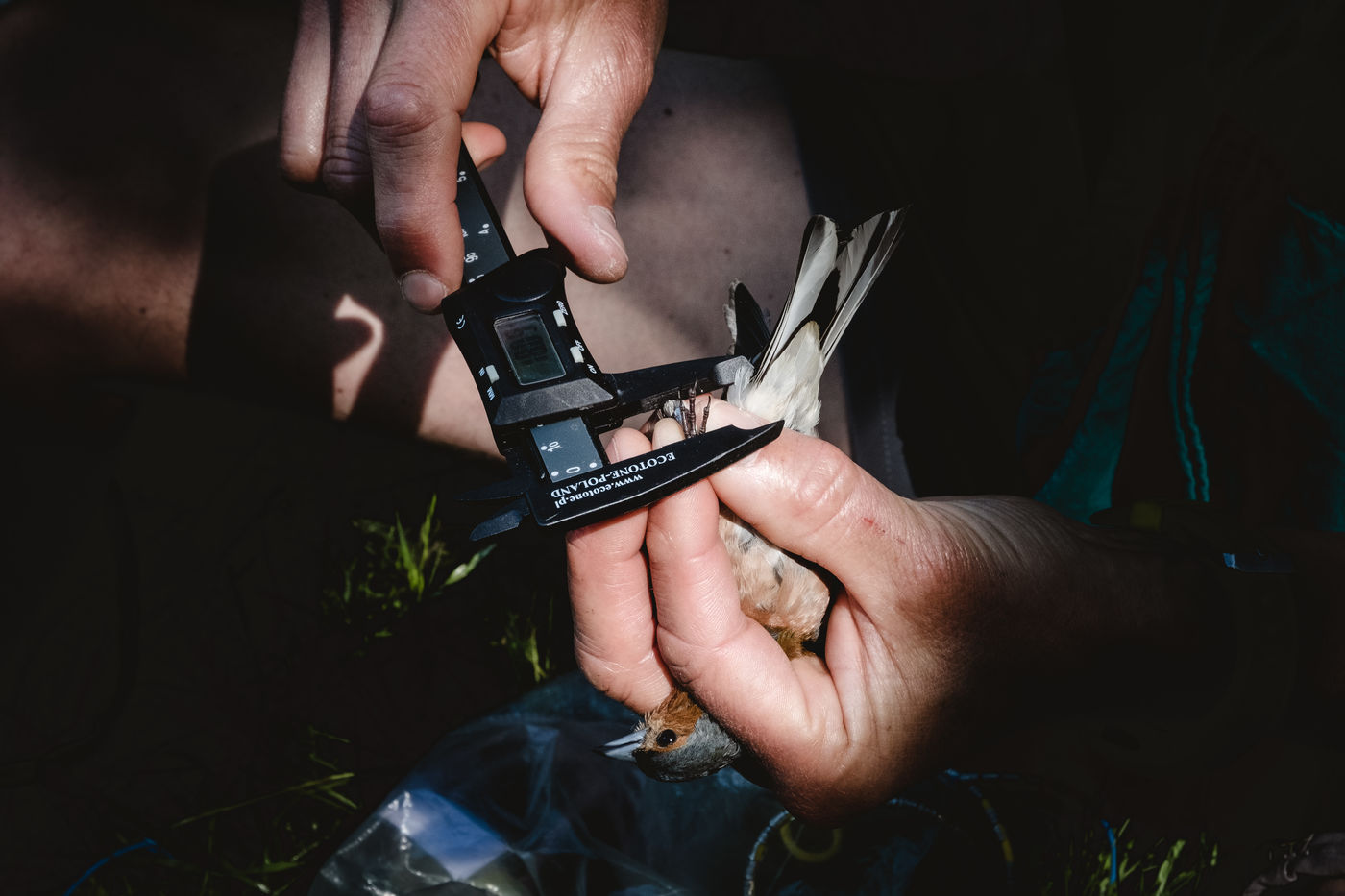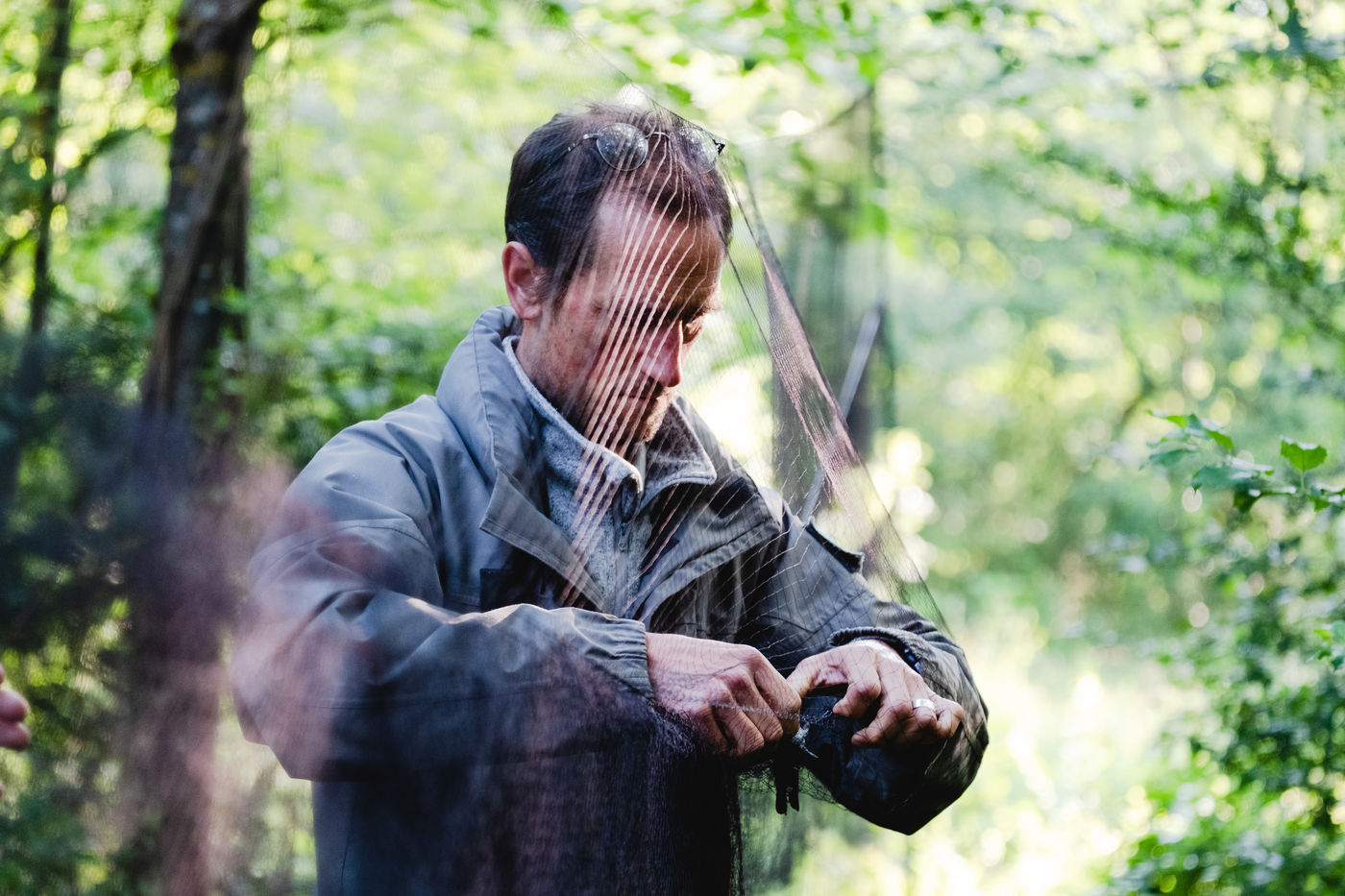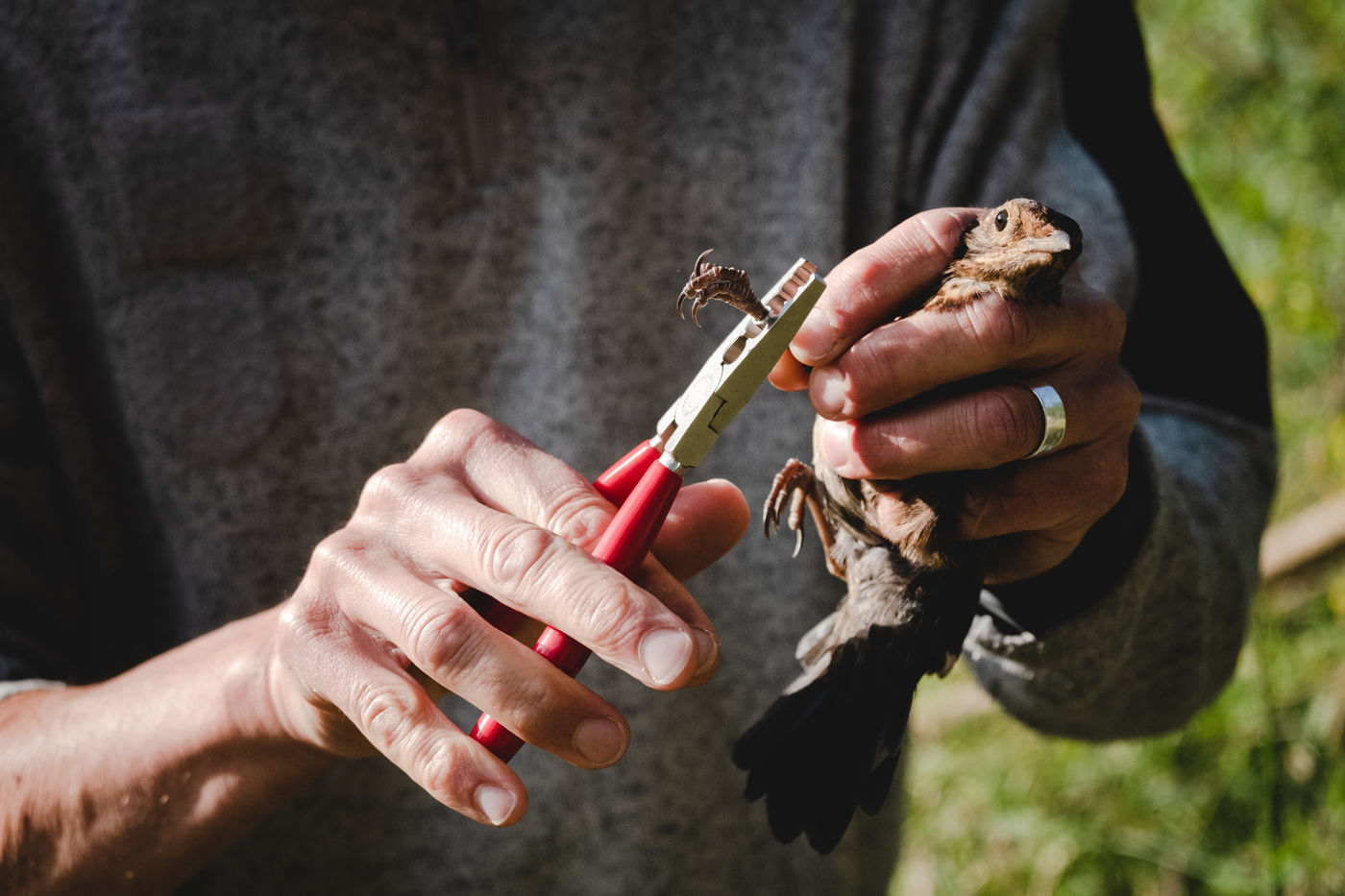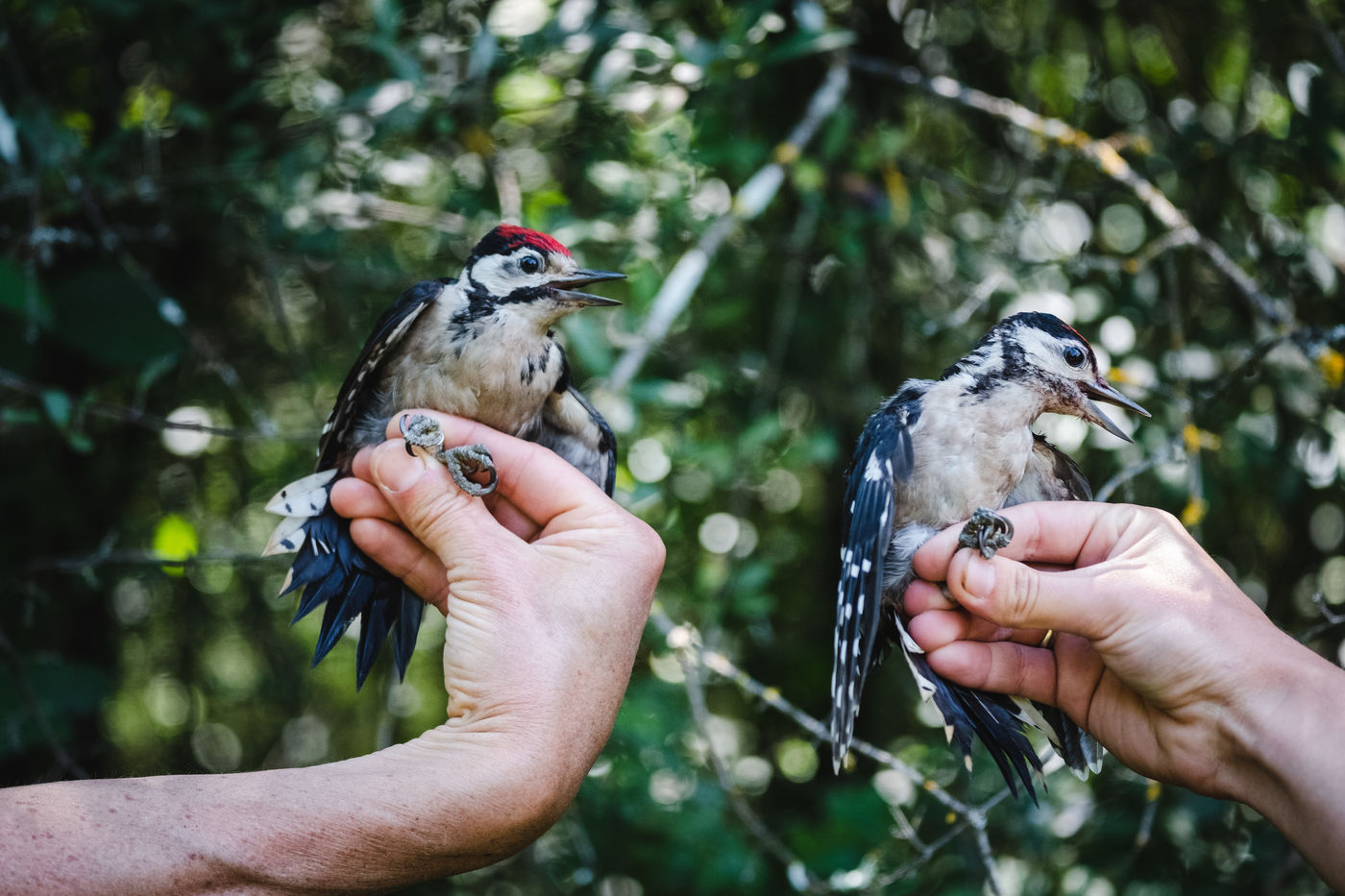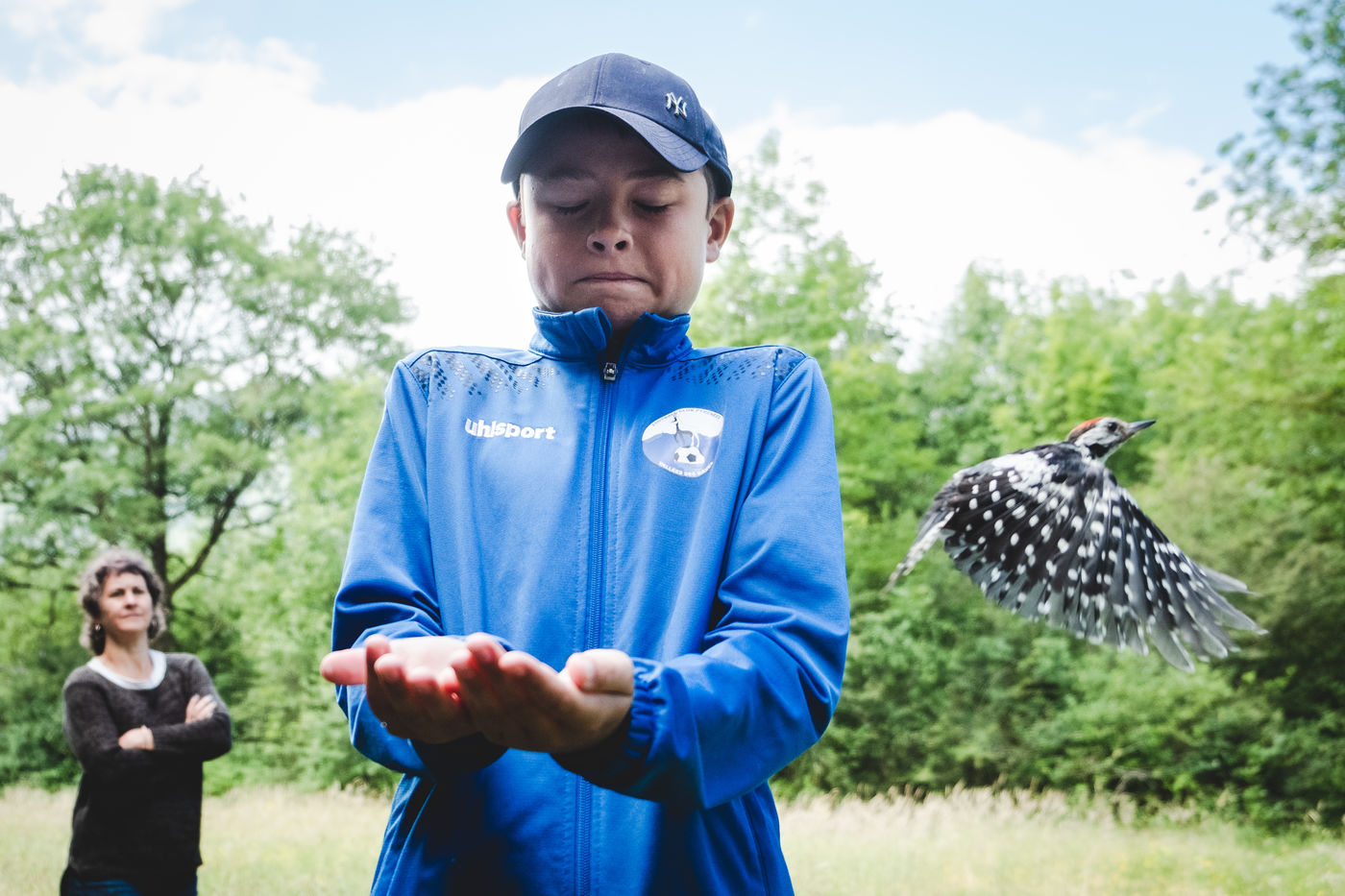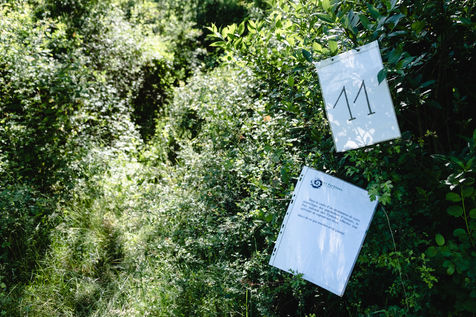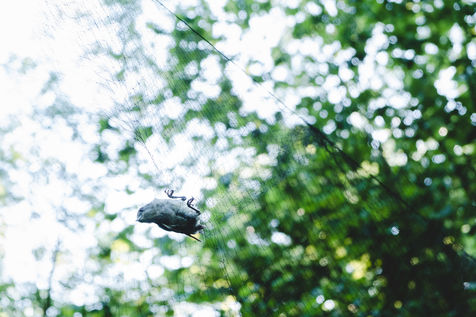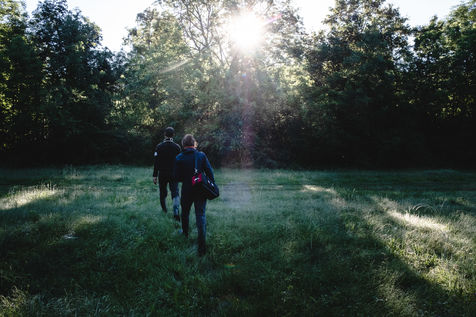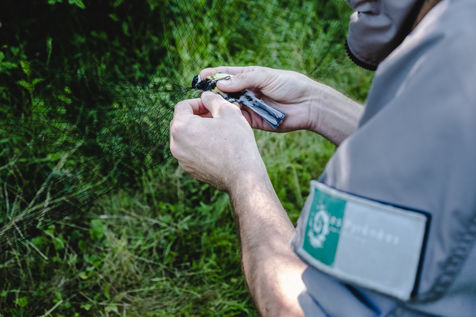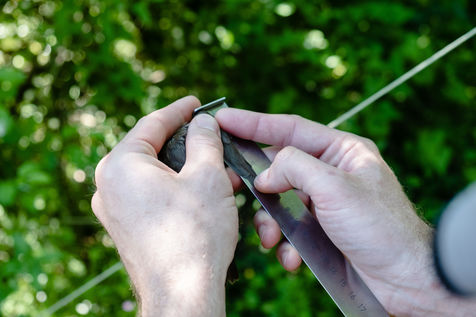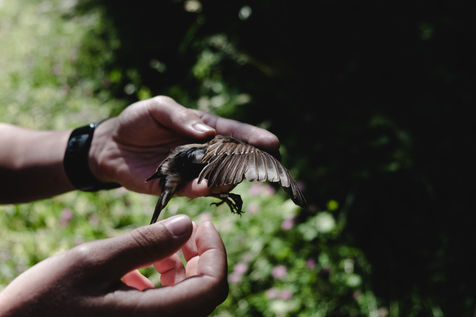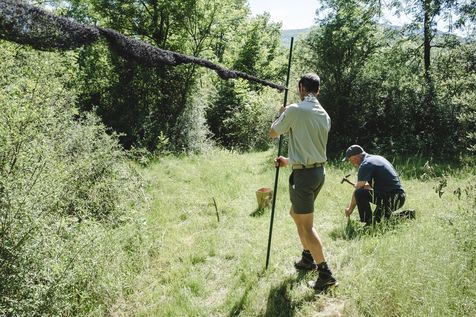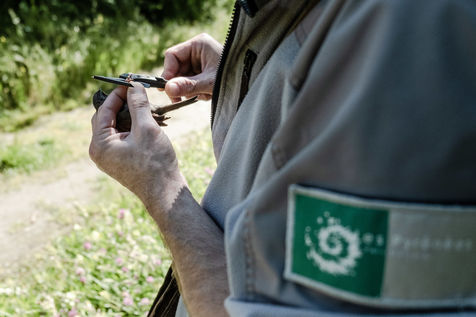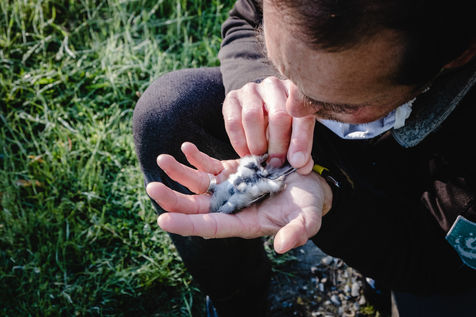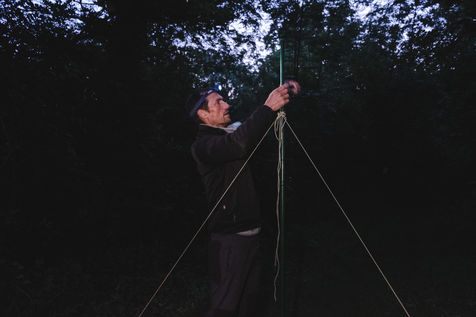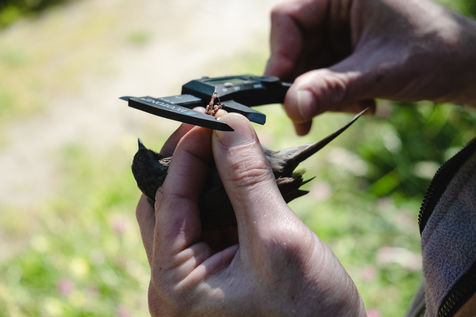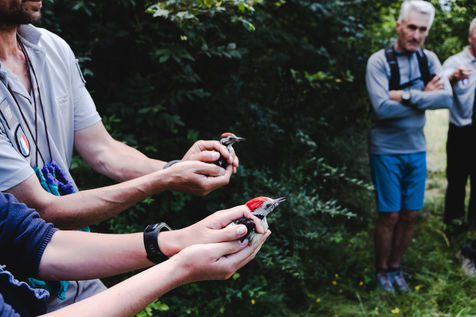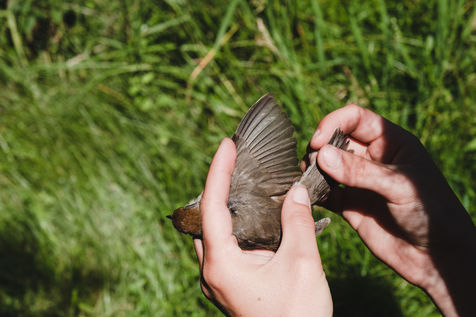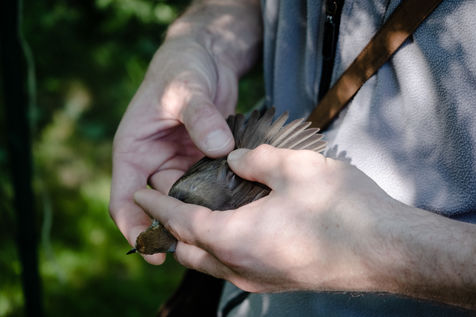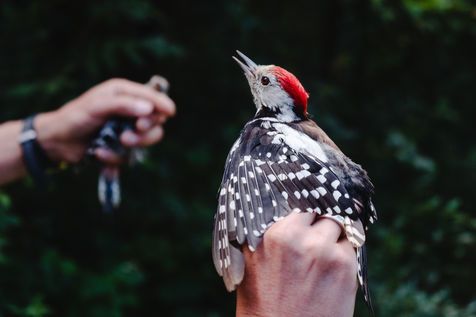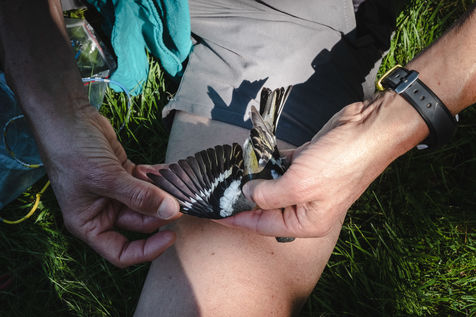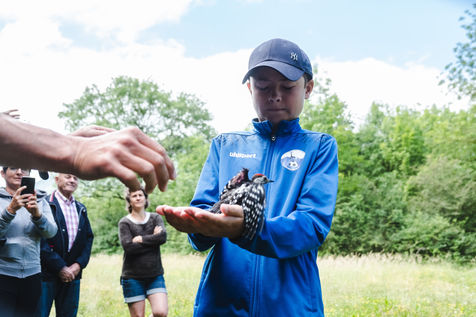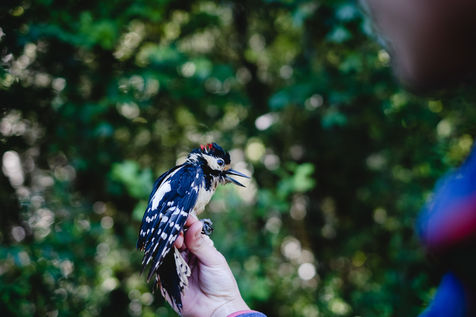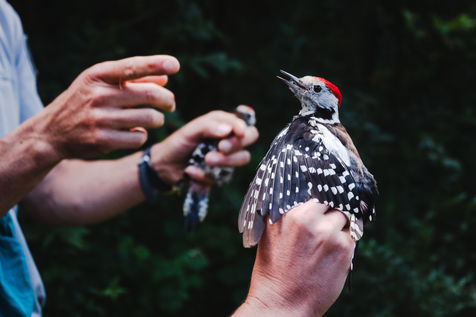Les oiseaux résisteront-ils aux changements climatiques ?
En 1989, le Centre de recherches sur la biologie des populations d'oiseaux, avec la caution de la communauté scientifique et le soutien financier du Ministère de l'Environnement, a mis en place un programme de Suivi Temporel des populations d'Oiseaux Communs nicheurs en France, en s'appuyant sur le réseau des bagueurs bénévoles : le programme STOC Capture.
Le principe du STOC Capture est de réaliser le suivi d'une communauté d'oiseaux sur un site donné dans le temps, en maintenant un effort de capture constant d'une année sur l'autre. Ce travail a pour but de documenter sur le long-terme, et à l'échelle nationale, le fonctionnement démographique des populations d'oiseaux communs, et l'influence des variations climatiques et d'habitat. Parmi ces oiseaux communs, on retrouve notamment des fauvettes à tête noire, des rouges-gorges, des pouillots véloces, des mésanges charbonnières, bleues ou à longue queue, des merles ou encore des grives.
Des programmes similaires aux STOC Capture en France existent dans un certain nombre de pays d'Europe comme le Constant Effort Ringing Site en Grande-Bretagne.
Ce matin-là, les gardes du Parc National des Pyrénées et une bagueuse d'un bureau d'étude indépendant se sont donnés rendez-vous dans la vallée pour la première session de capture. Il est 6 heures du matin à Lau-Balagnas, les lumières des frontales virevoltent dans l'obscurité. Les gardes s'affairent à déplier les filets qu'ils ont monté la veille et qu'ils ont pris soin de replier pour ne pas capturer d'oiseaux durant la nuit. 6h30, les captures peuvent commencer, les premiers passereaux se font prendre dans les filets. Quinze filets ont été mis en place dans des travées dissimulées au coeur de la forêt située en bordure du Gave de Pau. Les deux équipes s'engouffrent dans les bois en ayant préalablement séparé le nombre de filets en deux. Toutes les trente minutes, les deux équipes de gardes devons être revenues au premier filet pour vérifier qu'un oiseau ne soit pas resté bloqué trop longtemps. Une fois qu'un oiseau se fait prendre dans l'un des filets, un bagueur s'applique à démailler l'animal. La première observation est la présence ou non d'une bague sur la patte. La grande majorité des oiseaux communs ont été bagués en France avec la mention du Muséum d'Histoire Naturelle de Paris mais il arrive parfois qu'un oiseau ai été bagué à l'étranger, dans le cas d'un oiseau migrateur par exemple. Si l'état de santé de l'oiseau en question le permet, un des gardes procède délicatement au baguage de l'animal. Cet acte sert notamment à connaître la durée de vie de l'oiseau et à voir si il se déplace et dans quel intérêt. Par la suite, Les gardes et bagueurs mesurent la longueur du tarse, autrement dit la patte de l'oiseau située entre la cuisse et le pied, là où se trouve la bague. Ils procèdent dans un troisième temps à la mesure de l'aile. Ensuite, vient la détermination du sexe de l'animal lorsqu'il est adulte et parfois pour les jeunes lorsque cela est possible. Cette détermination s'effectue en fonction de critères précis tels que la présence/absence d'une plaque incubatrice, d'une protubérance cloacale ou d'un dimorphisme de couleur qui est la différence de contraste de couleurs que l'on retrouve notamment sur les ailes. Les gardes et bagueurs poursuivent leurs observations en regardant l'état de la mue chez l'animal. Cela correspond au renouvellement du plumage avec la perte d'anciennes plumes. Vient ensuite l'étape de la pesée de l'oiseau dans un cornet ou dans un petit sac en tissu. Toutes ces étapes sont réalisées le plus efficacement possible afin de ne pas stresser l'animal. Le lâchage s'effectue à proximité du filet pour que l'oiseau retrouve plus facilement ses repères.
La dernière tournée se fait un peu avant midi, puis il est l'heure de ranger les filets.
Le nombre d'oiseaux capturés varie selon les sessions. Cette année, il s'agissait de la dixième année de STOC Capture sur ce même lieu dans les Hautes-Pyrénées. Depuis 2010, la diversité des espèces d'oiseaux communs s'est appauvrie inexorablement. Le réchauffement climatique a un impact colossal sur la biodiversité. En effet, l'augmentation de la température de plusieurs degrés prévue pour la fin de ce siècle entraînera des déplacements de populations d'oiseaux encore plus importantes et surtout plus précocement étant donné l'arrivée prématurée du printemps. Dans les Pyrénées, en avril 2019, les bagueurs ont bagué un pouillot ibérique avec une bague identifiée Muséum National d'Histoire Naturelle de Paris. Quelques mois plus tard, ce même oiseau a été capturé par des chercheurs à des milliers de kilomètres de là, en Norvège.
Si certaines espèces ne paraissent pas impactées par le réchauffement climatique, d'autres espèces sont quant à elles menacées de disparaître car leurs capacités adaptatives sont moindres.
L'année prochaine, le Parc National et ses gardes devront continuer les STOC Capture pour avoir dans une dizaine d'années environ des statistiques fiables et claires sur l'évolution des espèces qui permettront sûrement de prendre conscience encore un peu plus de l'équilibre précaire des oiseaux communs et de la biodiversité dans son ensemble.
Capture of common birds - Pyrenees National Park
In 1989, the Centre for Research on the Biology of Bird Populations, with the backing of the scientific community and financial support from the Ministry of the Environment, set up a programme for the Temporal Monitoring of Populations of Common Breeding Birds in France, based on the network of volunteer banders: the STOC Capture programme.
The principle of STOC Capture is to monitor a community of birds on a given site over time, maintaining a constant capture effort from one year to the next. The aim of this work is to document on a long-term, national scale, the demographic functioning of common bird populations and the influence of climatic and habitat variations. These common birds include black-headed warblers, robins, swift chickadees, long-tailed, blue and sable chickadees, blackbirds and thrushes.
Programmes similar to AUX STOC Capture in France exist in a number of European countries such as the Constant Effort Ringing Site in Great Britain.
That morning, the guards of the Pyrenees National Park and a ringer from an independent consultancy firm met in the valley for the first capture session. It is 6 o'clock in the morning in Lau-Balagnas, the lights of the headlamps twirl in the darkness. The guards are busy unfolding the nets they set up the day before and which they have taken care to fold up so as not to capture birds during the night. At 6.30 am, the captures can begin, the first passerines are caught in the nets. Fifteen nets were set in bays hidden in the heart of the forest on the edge of the Gave de Pau. The two teams rush into the woods having previously separated the number of nets in half. Every thirty minutes, the two teams of guards have to return to the first net to check that a bird has not been stuck for too long. Once a bird is caught in one of the nets, a bander will remove the enamel. The first observation is whether or not there is a band on the leg. The vast majority of common birds have been banded in France with the mention of the Paris Natural History Museum, but sometimes a bird has been banded abroad, in the case of a migratory bird for example. If the state of health of the bird in question allows it, one of the guards delicately bands the animal. One of the purposes of banding is to find out how long the bird will live and whether it is moving around and for what purpose. The guards and banders then measure the length of the tarsus, the bird's leg between the thigh and the foot where the band is placed. The third step is to measure the wing. Then comes the determination of the sex of the animal when it is adult and sometimes for the young when possible. This determination is carried out according to precise criteria such as the presence/absence of a brood patch, a cloacal protuberance or a colour dimorphism which is the difference in colour contrast found notably on the wings. Guards and banders continue their observations by looking at the state of moulting in the animal. This corresponds to the renewal of the plumage with the loss of old feathers. Then comes the stage of weighing the bird in a cone or small cloth bag. All these steps are carried out as efficiently as possible so as not to stress the animal. The bird is released close to the net so that it can find its bearings more easily.
The last round is done a little before noon, then it is time to put the nets away.
The number of birds captured varies according to the session. This year was the tenth year of STOC Capture on this same site in the Hautes-Pyrénées. Since 2010, the diversity of common bird species has been inexorably depleted. Global warming has a colossal impact on biodiversity. Indeed, the increase in temperature of several degrees forecast for the end of this century will lead to even greater displacement of bird populations and especially earlier, given the premature arrival of spring. In the Pyrenees, in April 2019, banders banded an Iberian warbler with a ring identified as the Muséum National d'Histoire Naturelle in Paris. A few months later, this same bird was captured by researchers thousands of kilometres away in Norway.
While some species do not appear to be affected by global warming, other species are threatened with extinction because of their lower adaptive capacities.
Next year, the National Park and its rangers will have to continue the STOC Capture to have in about ten years' time some statistics on the number of species that have been captured.
Translated with www.DeepL.com/Translator (free version)
